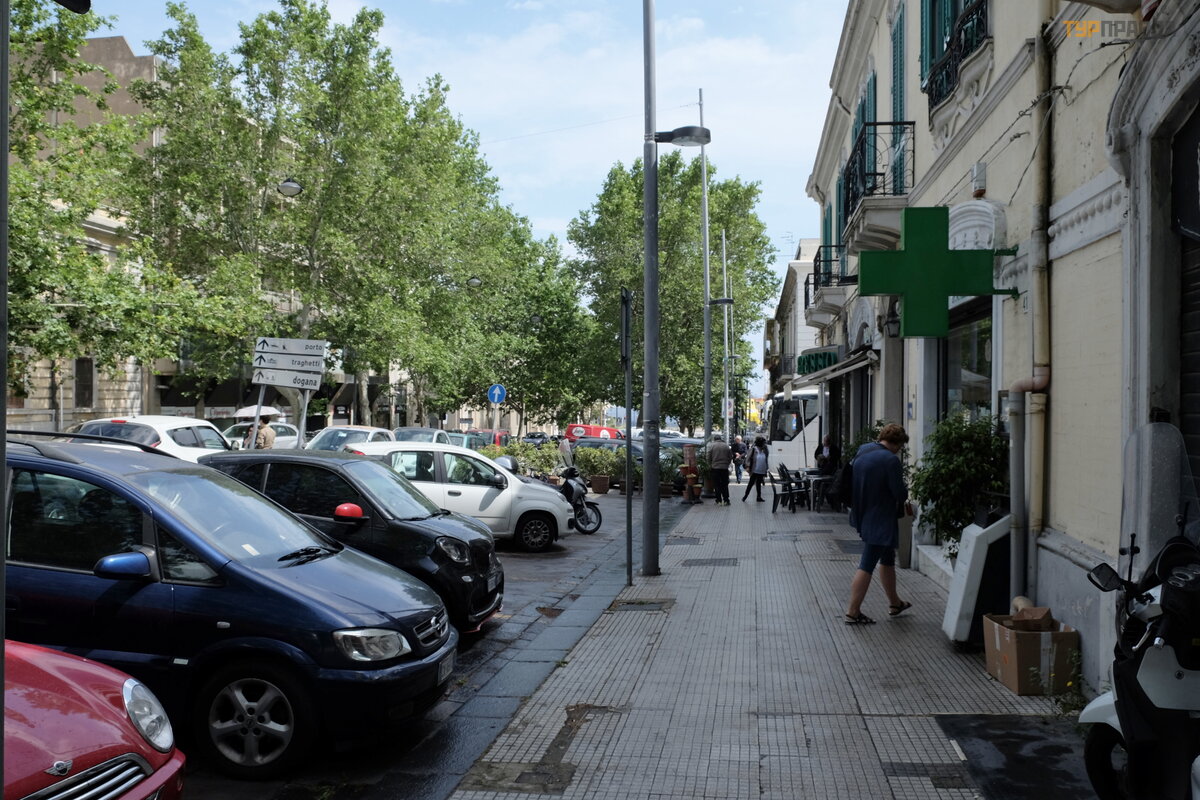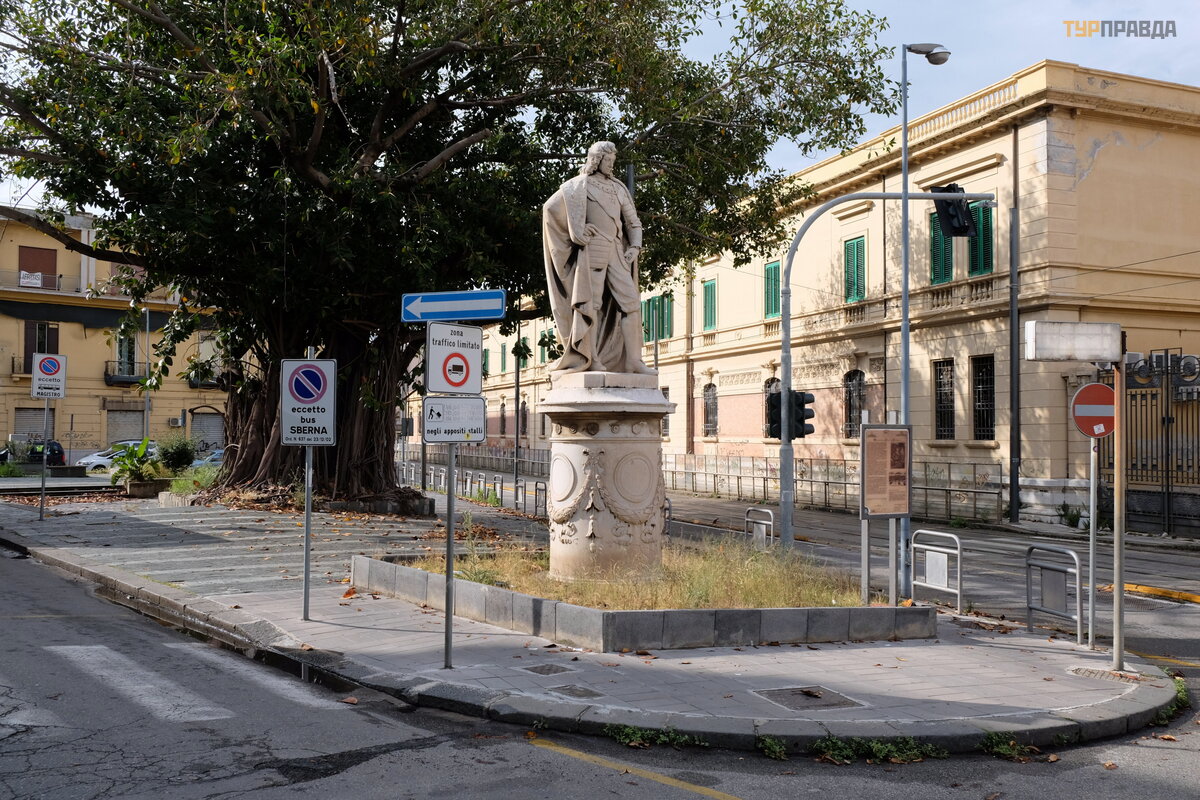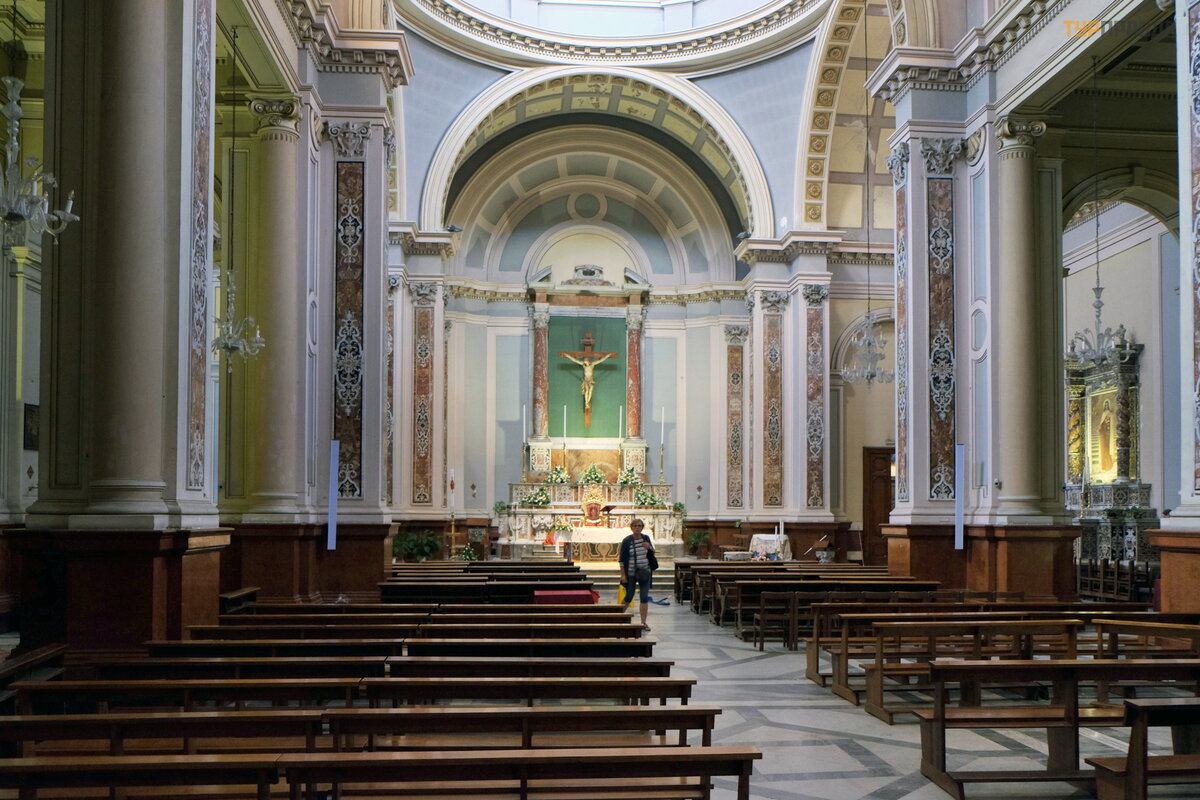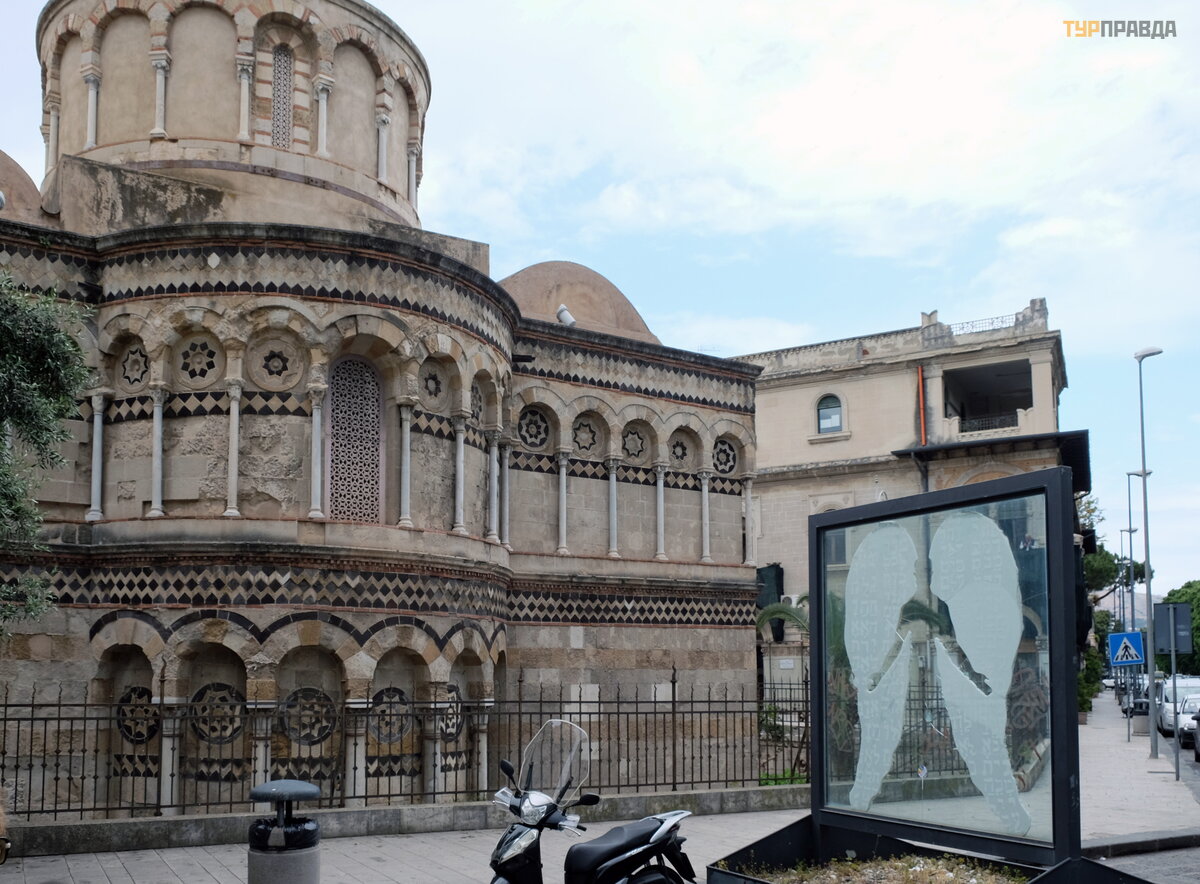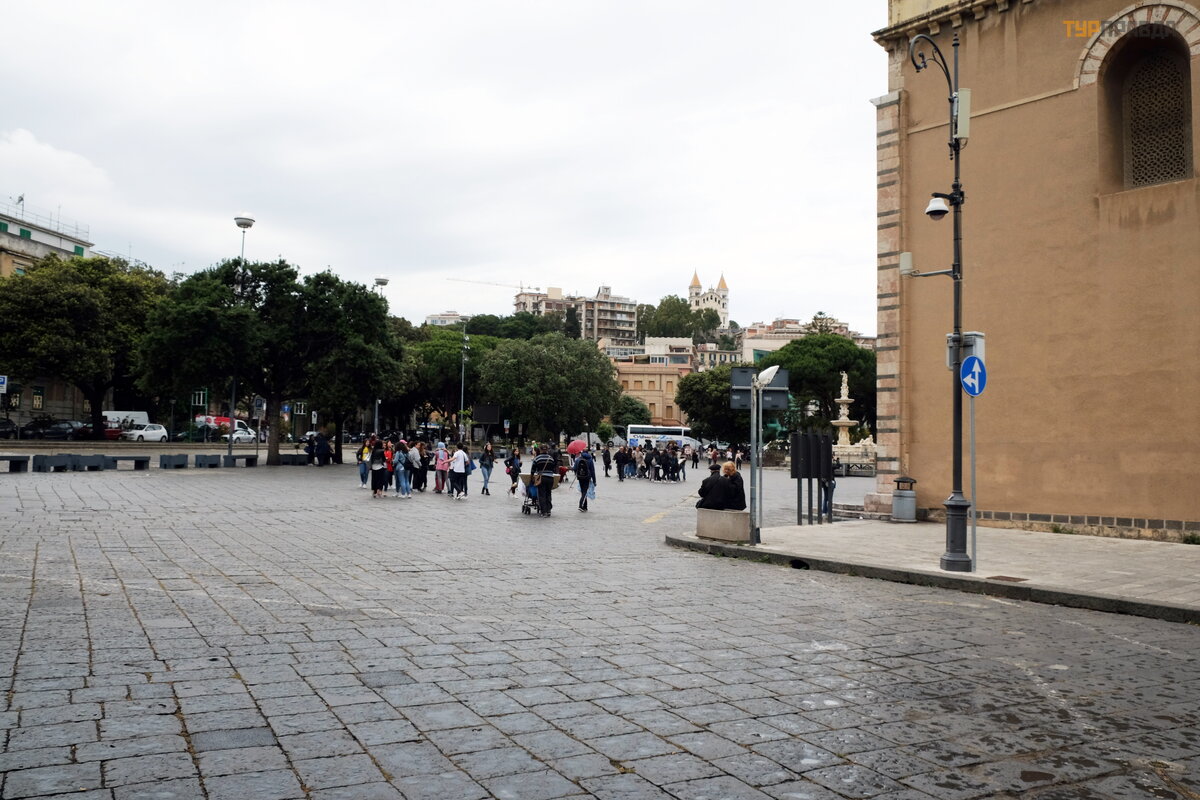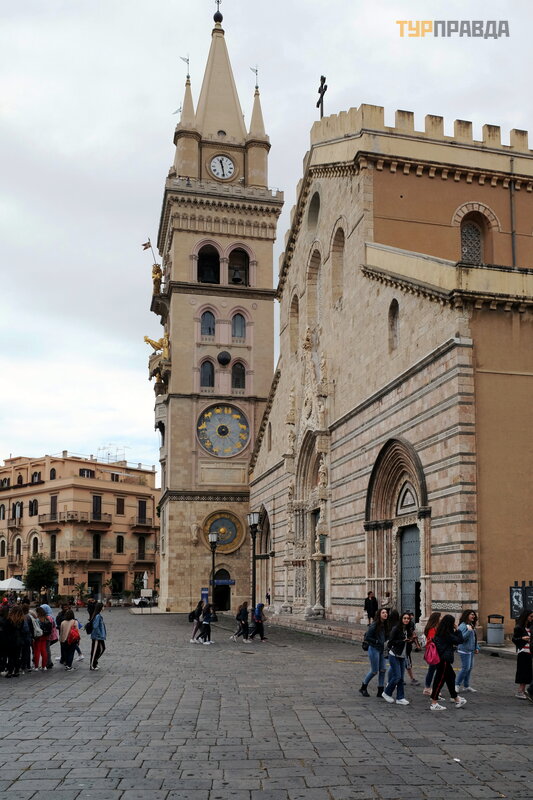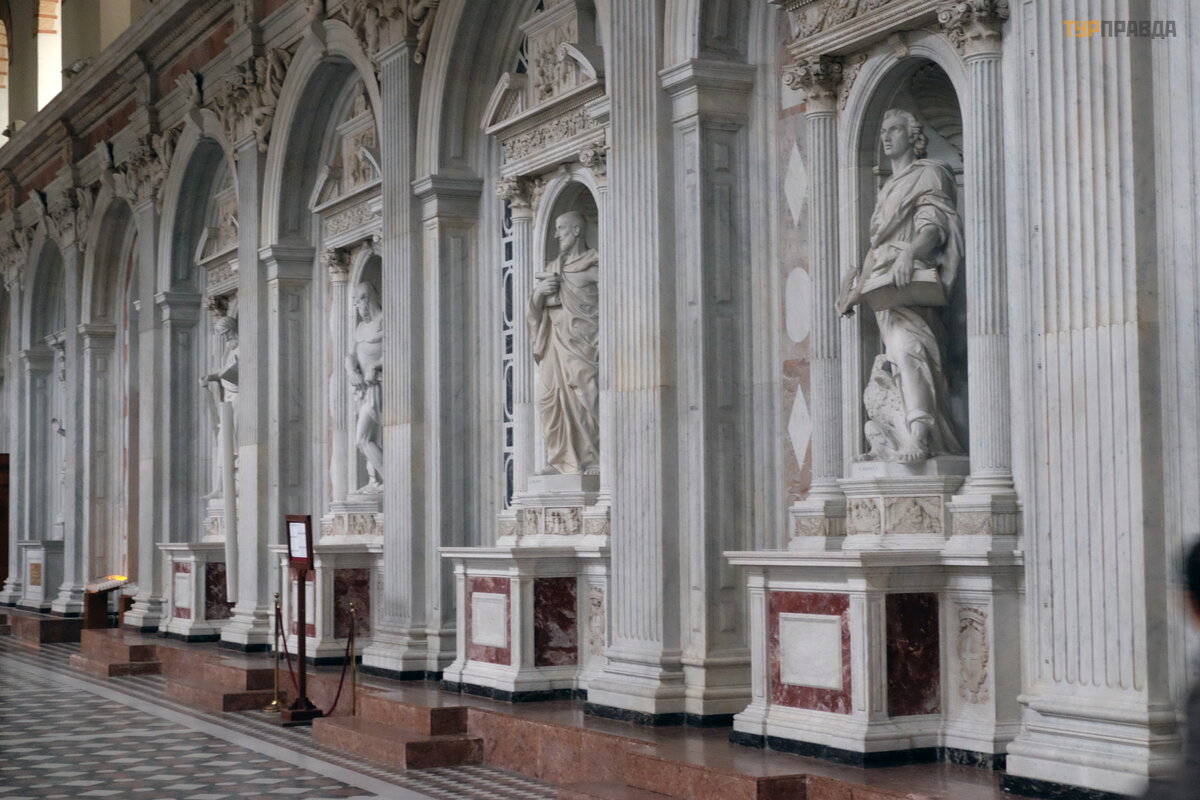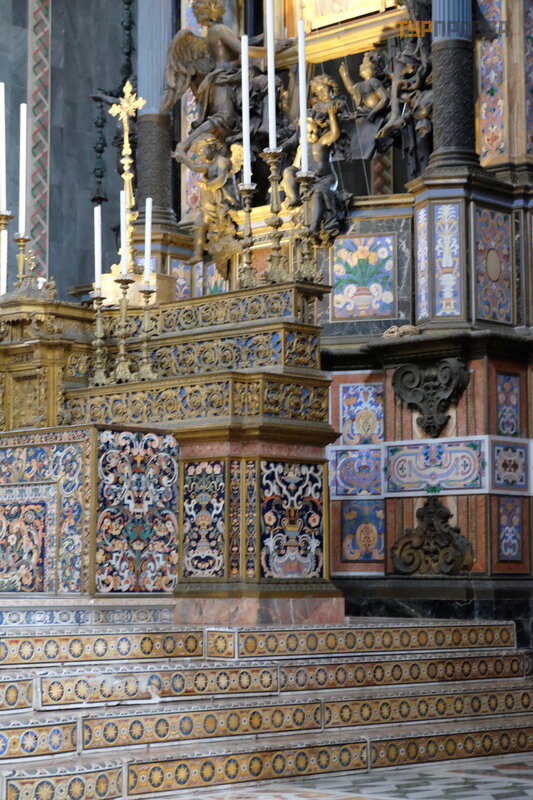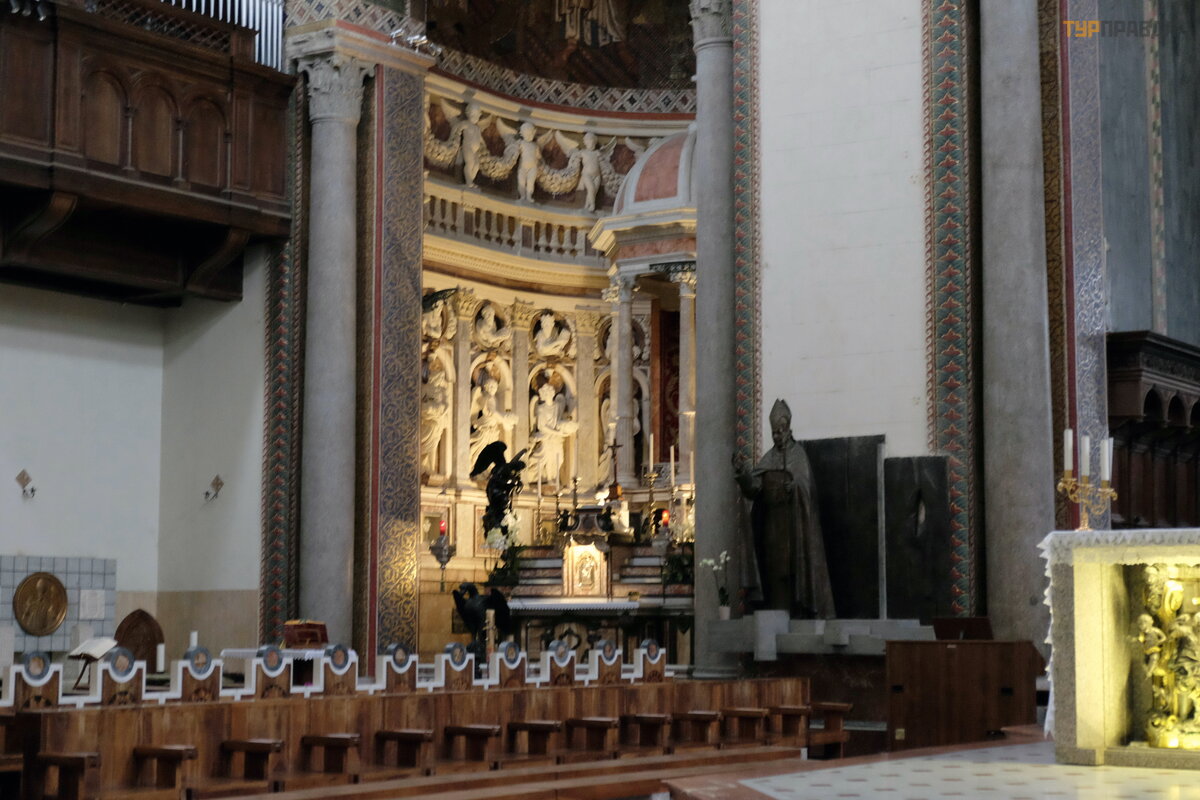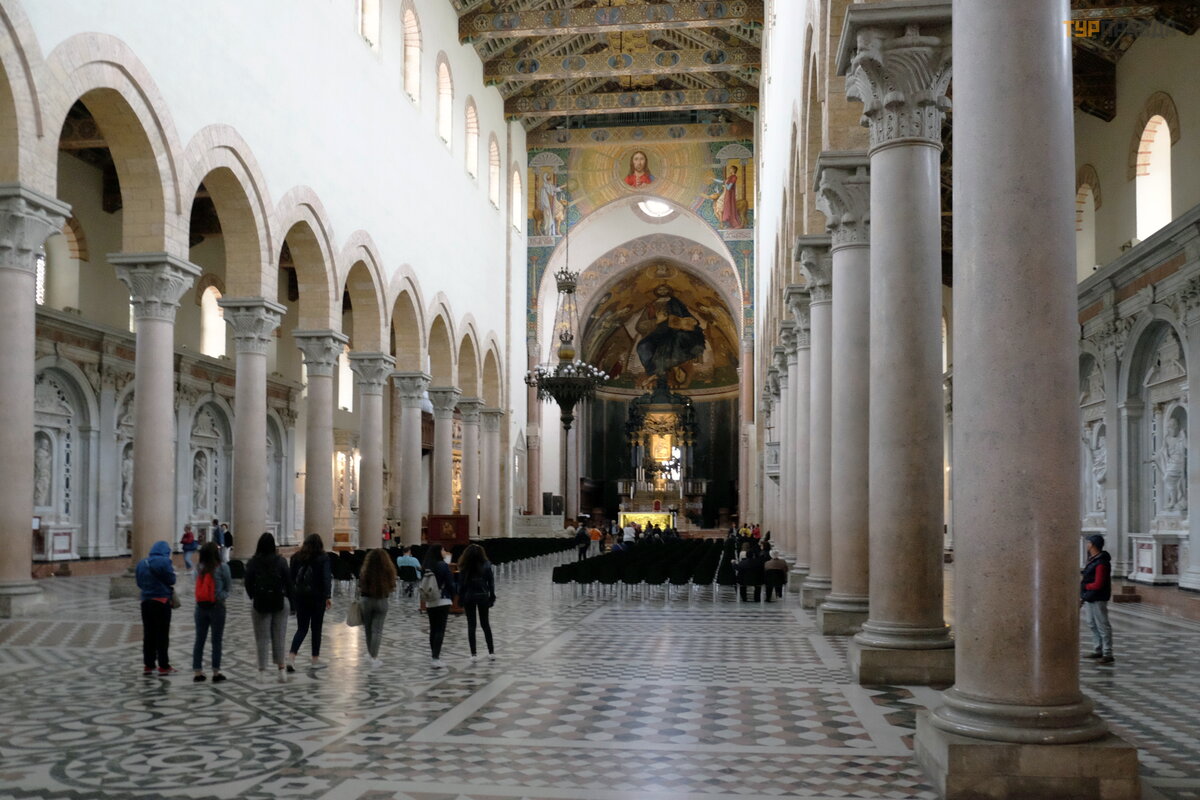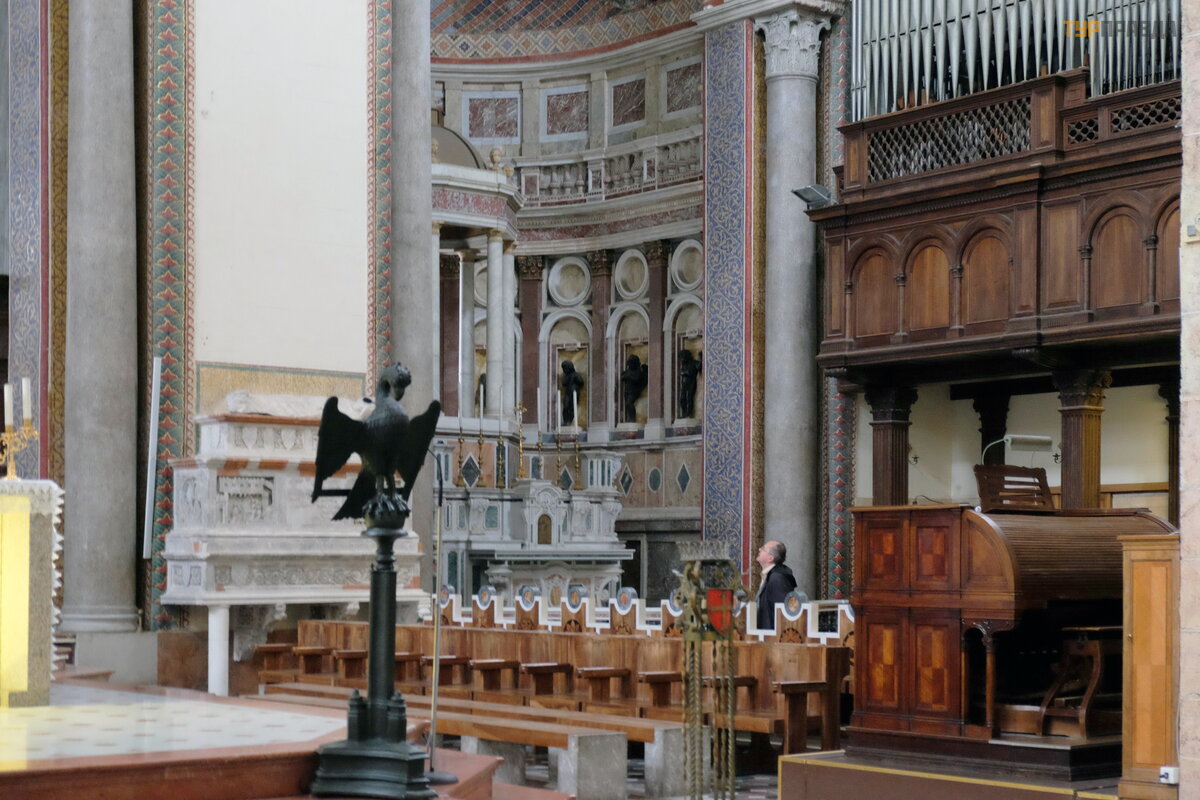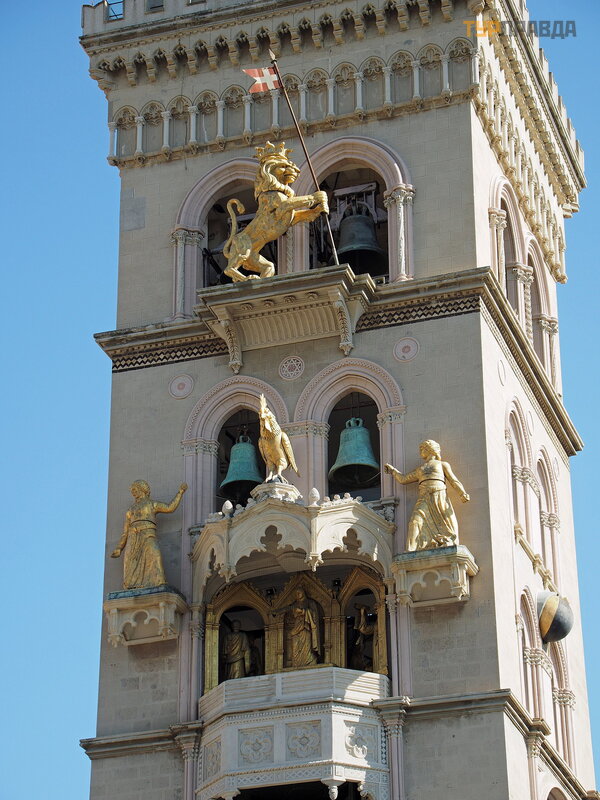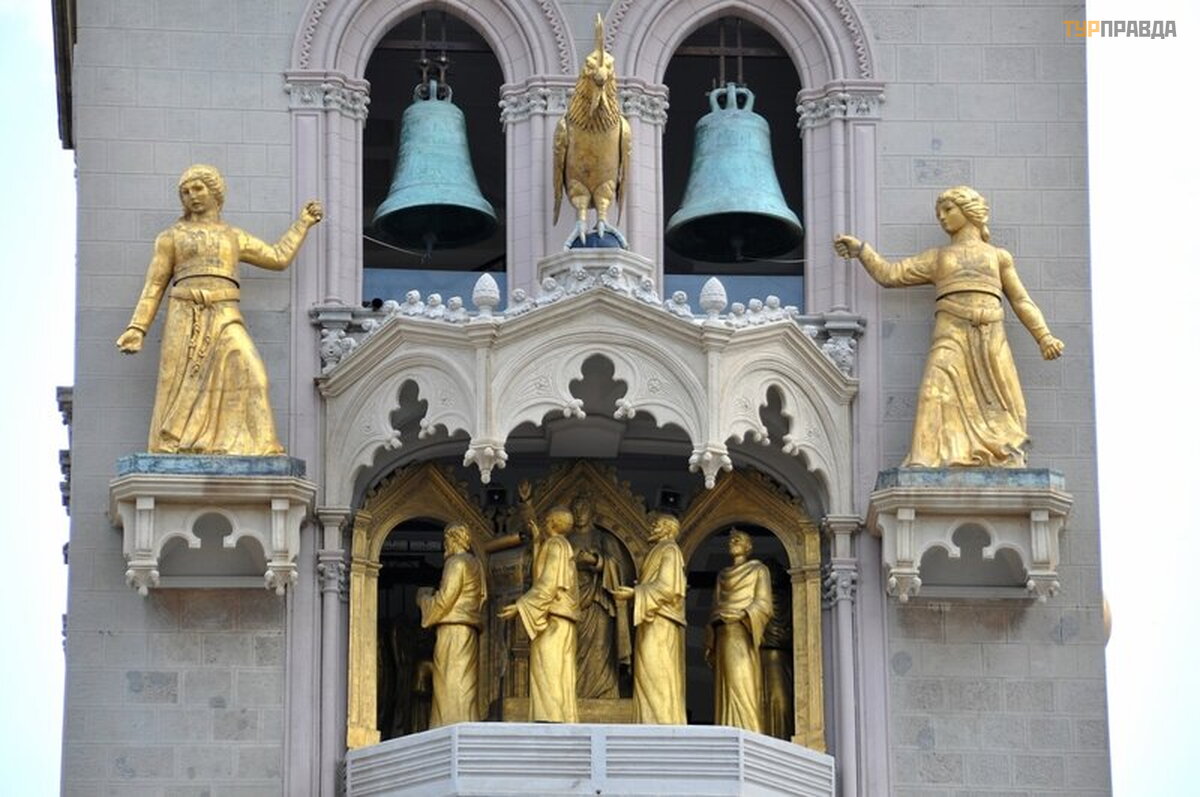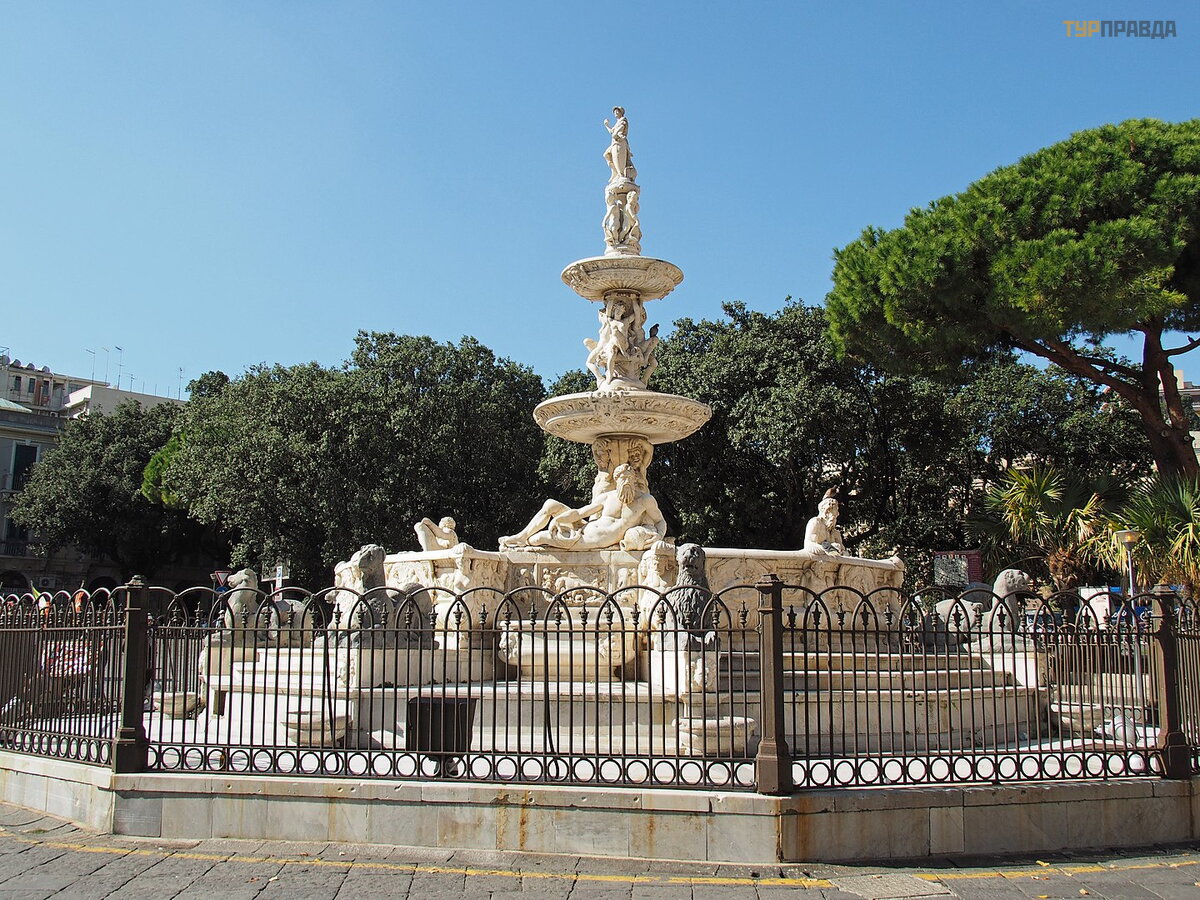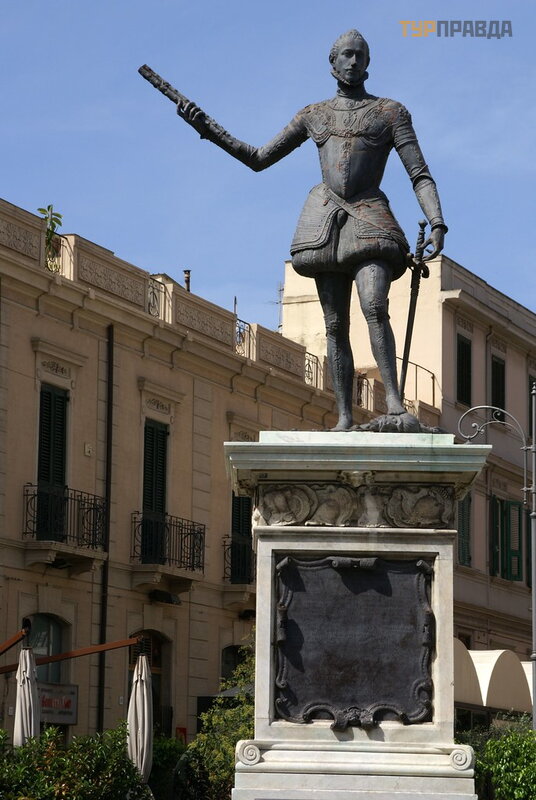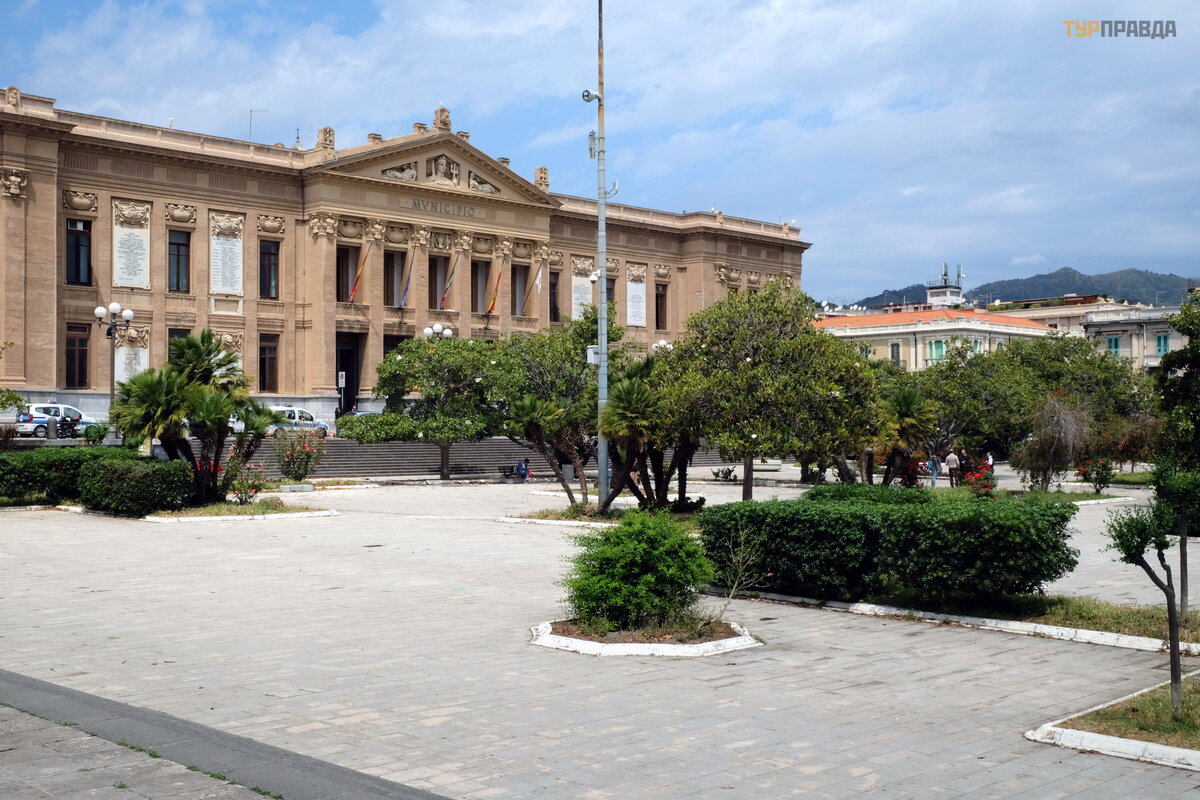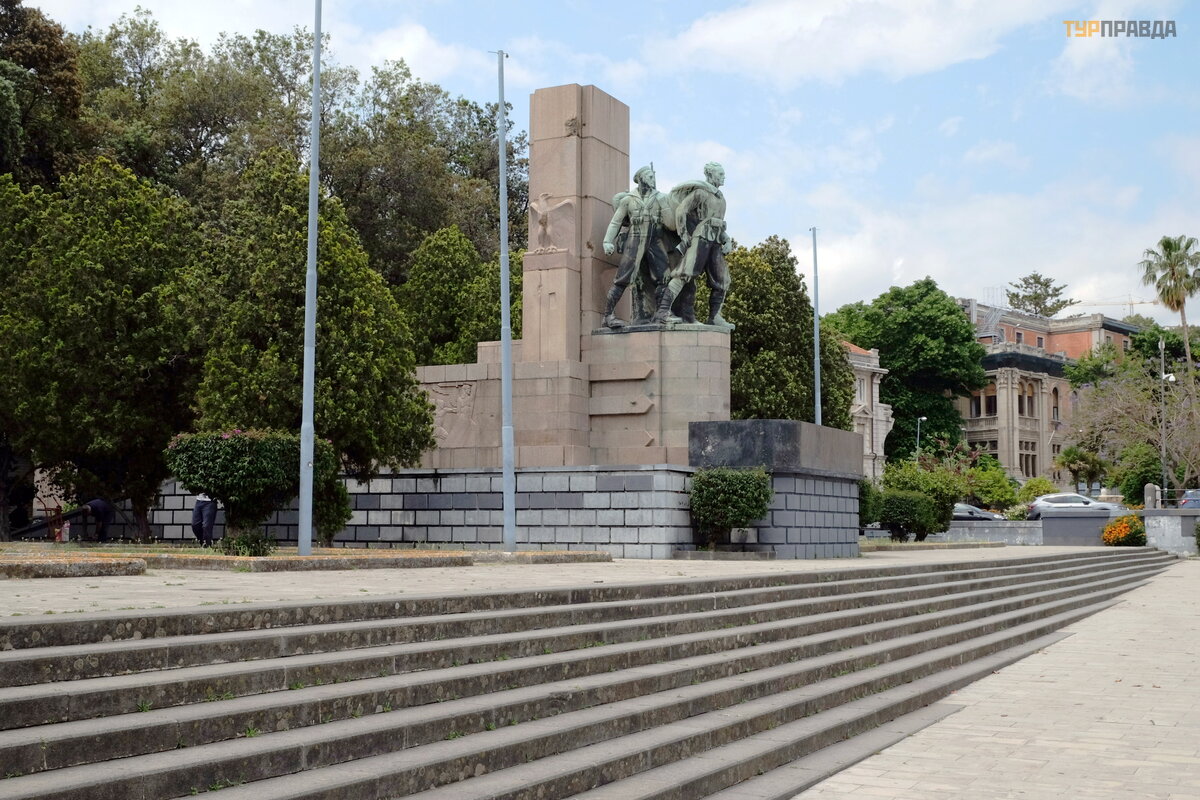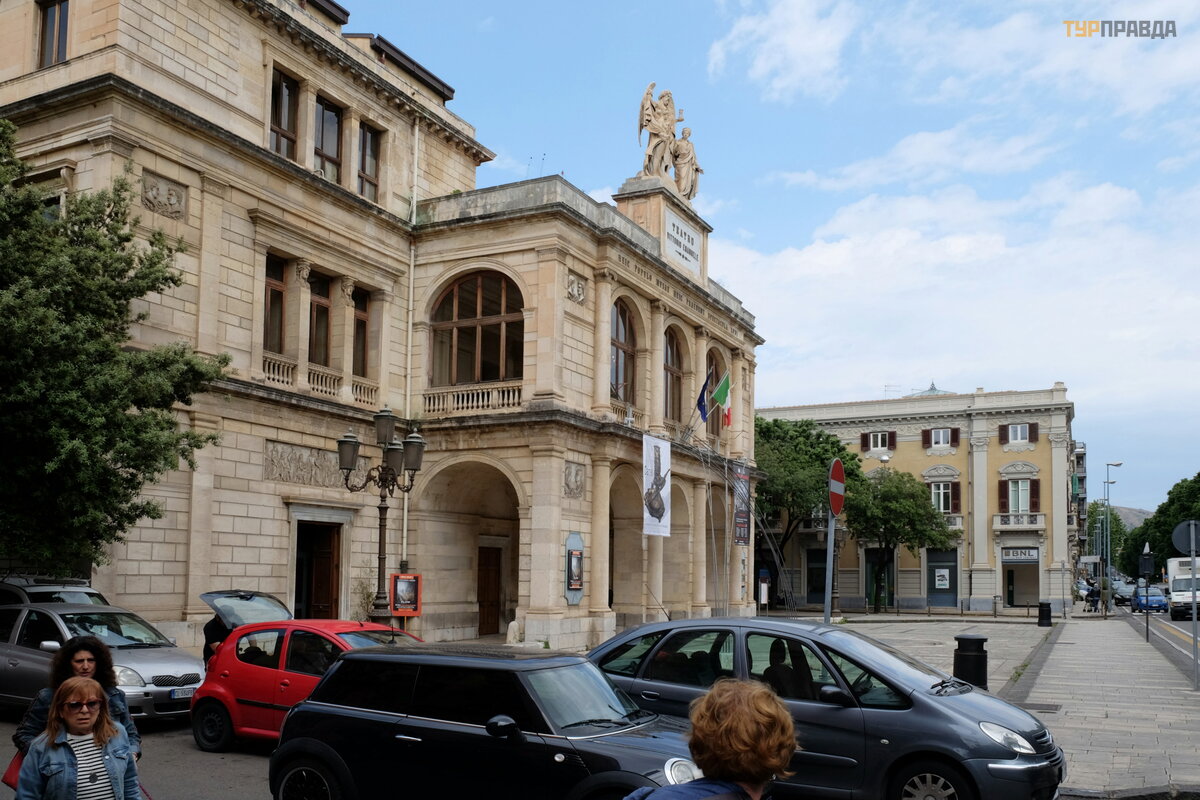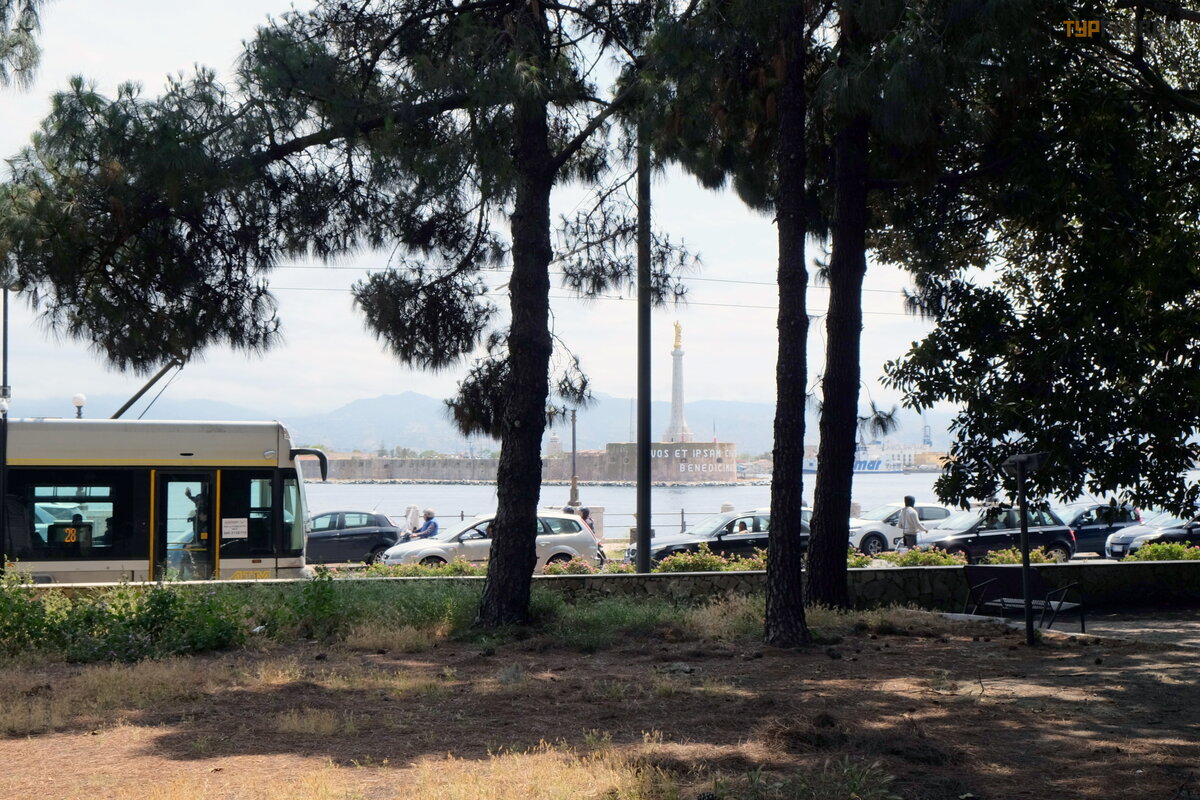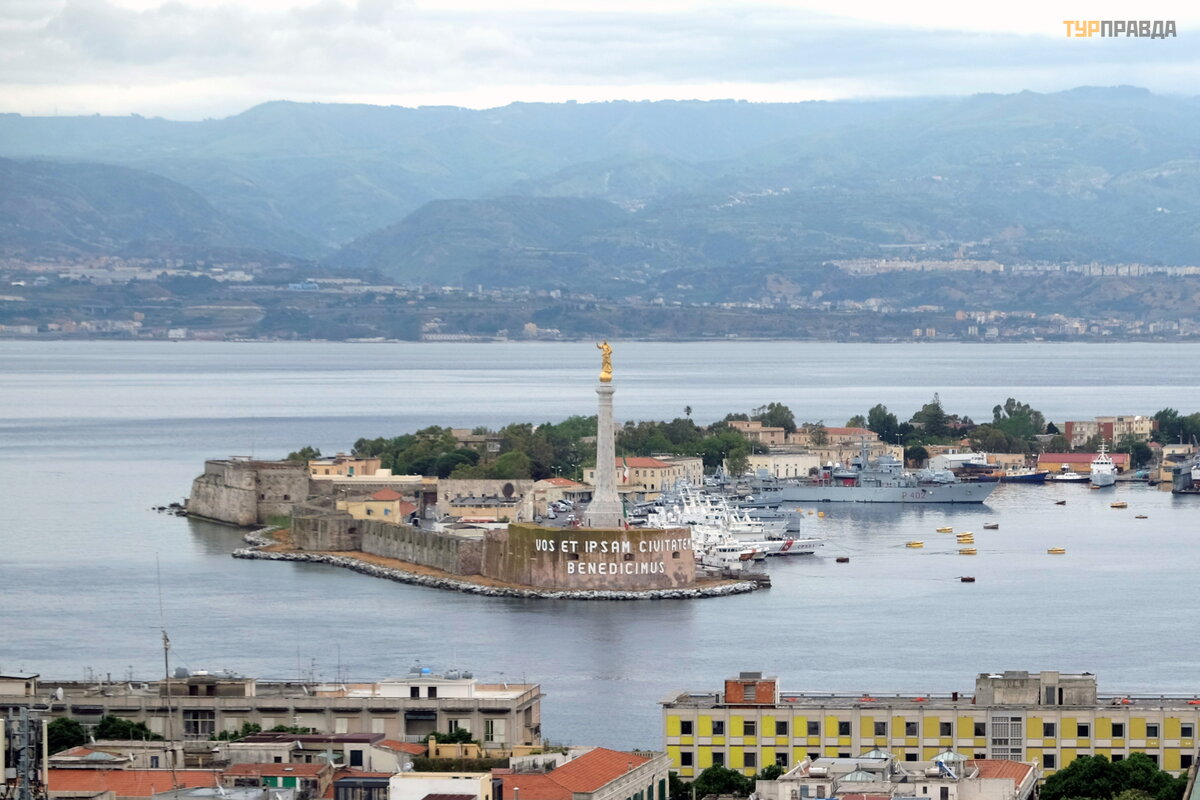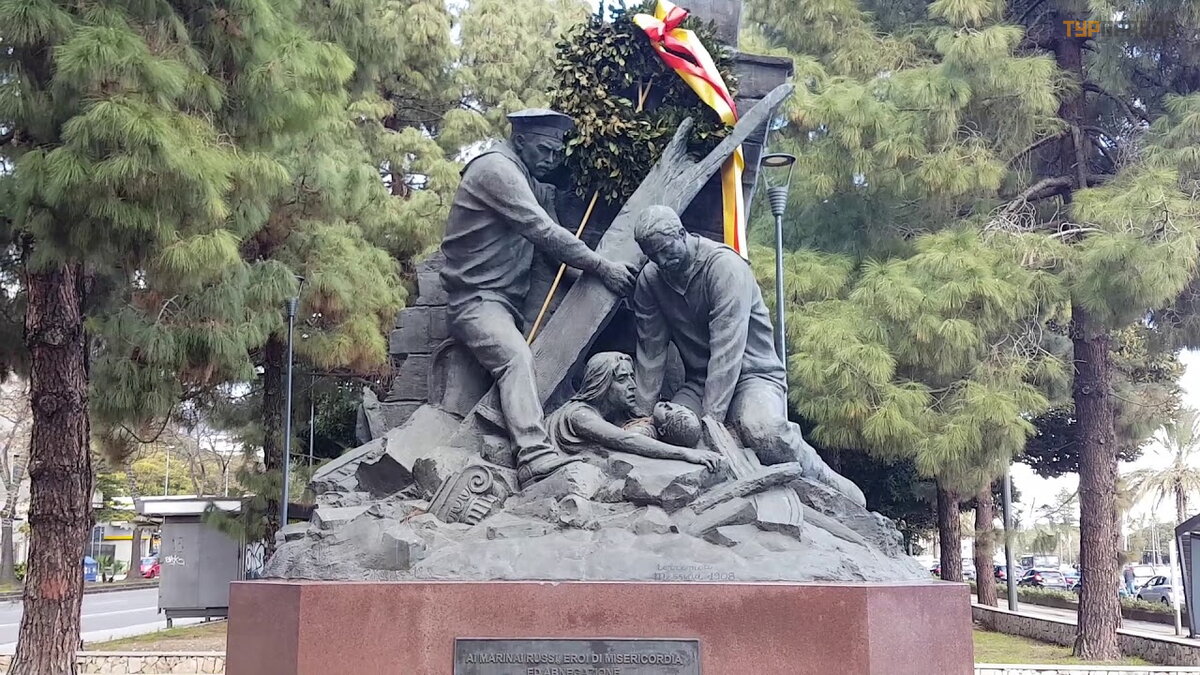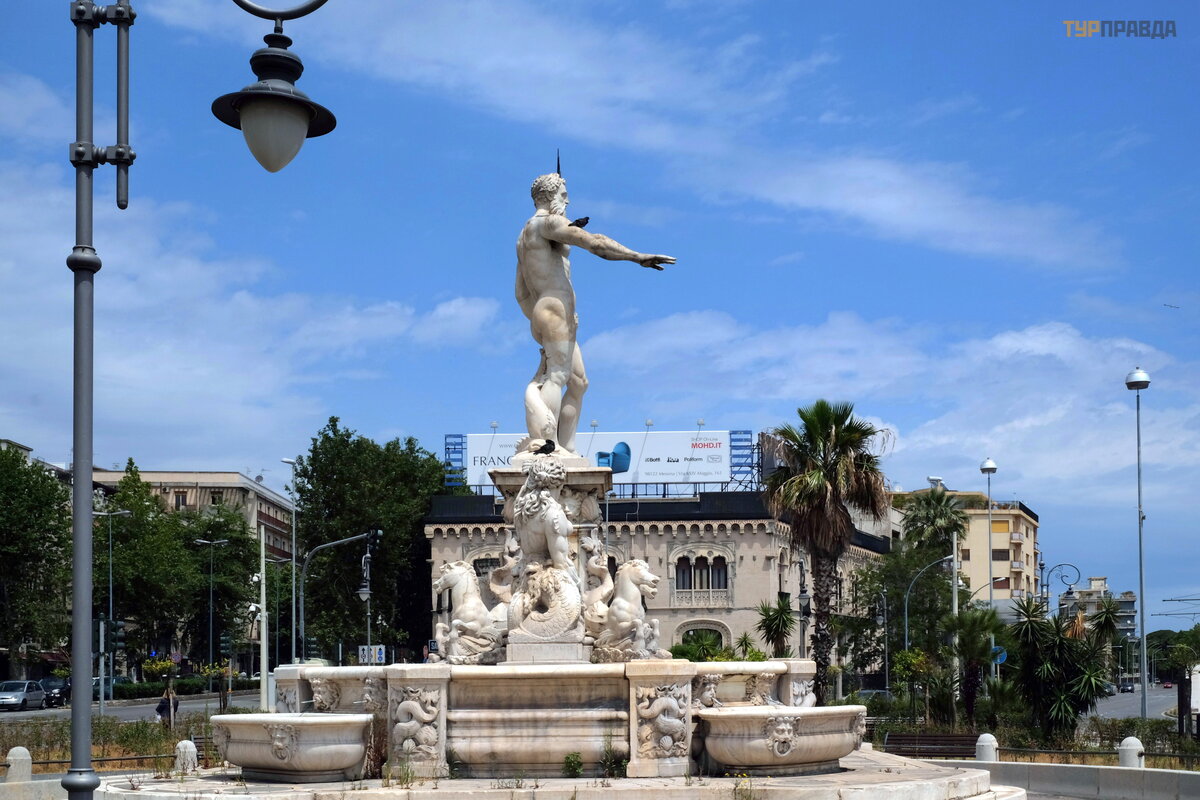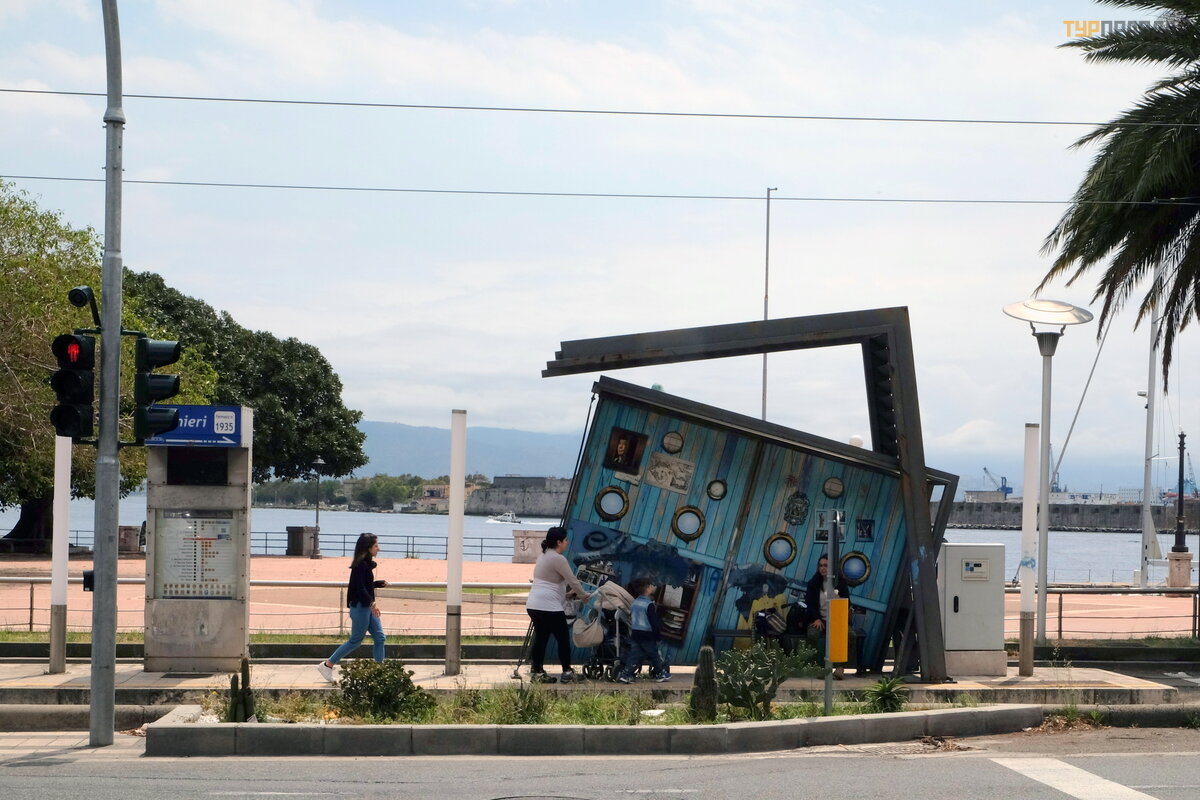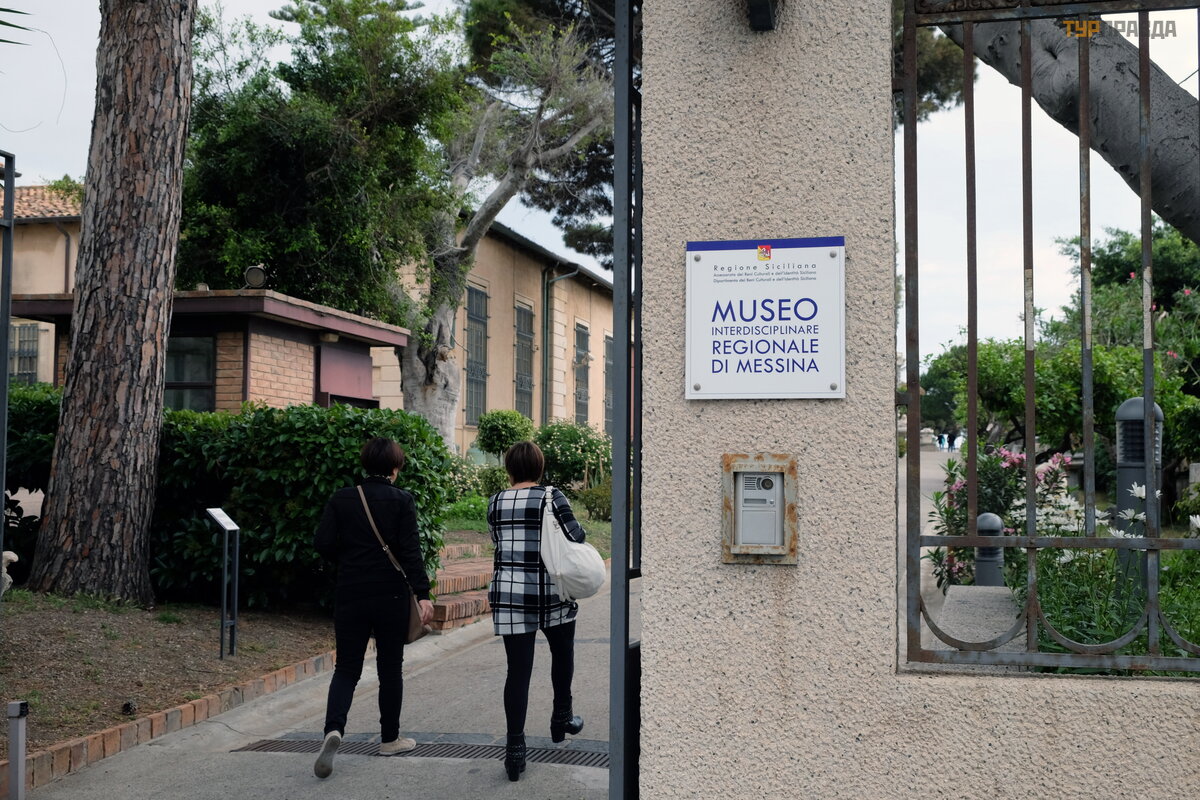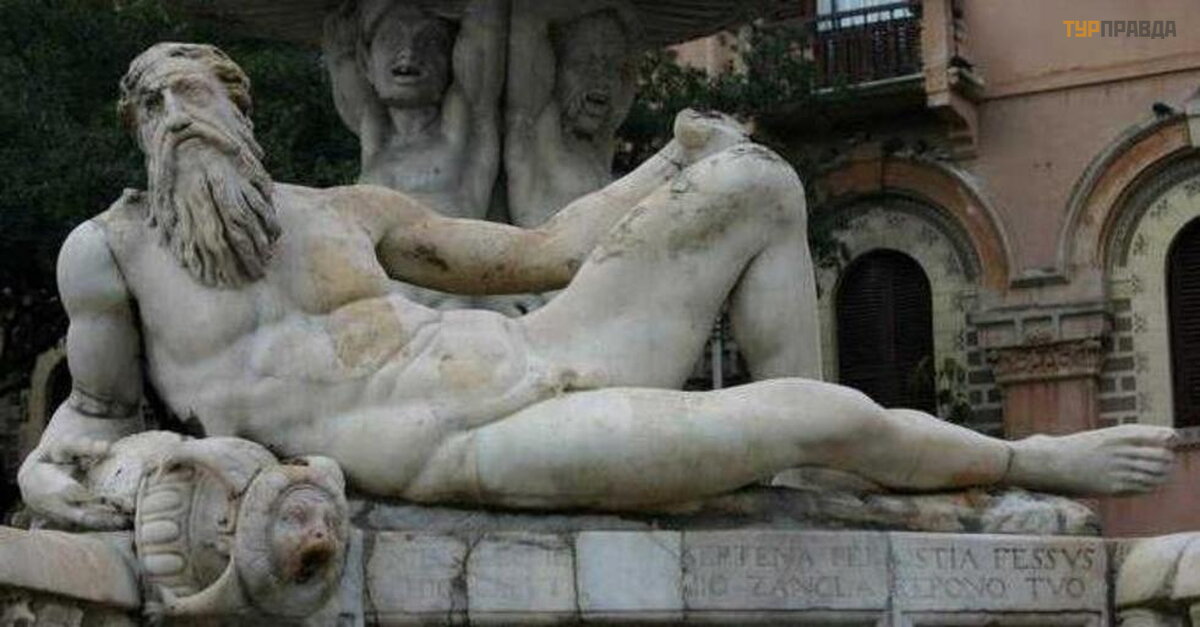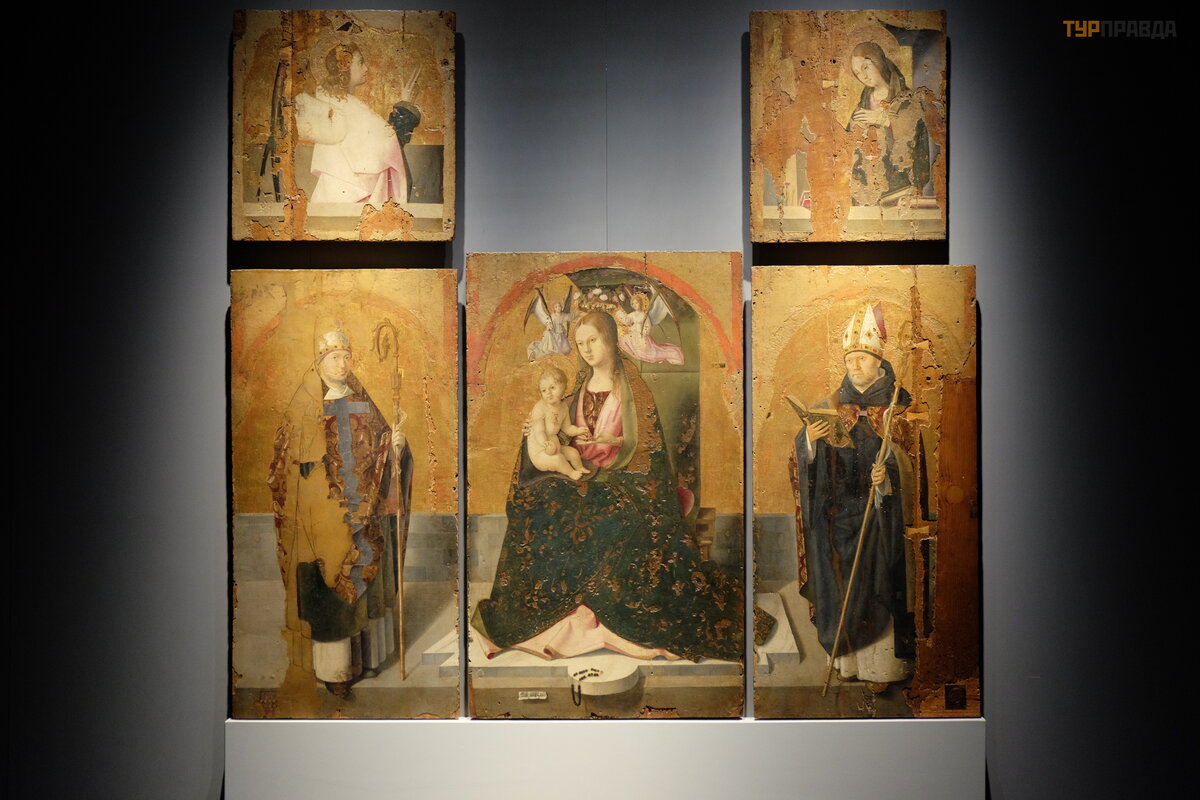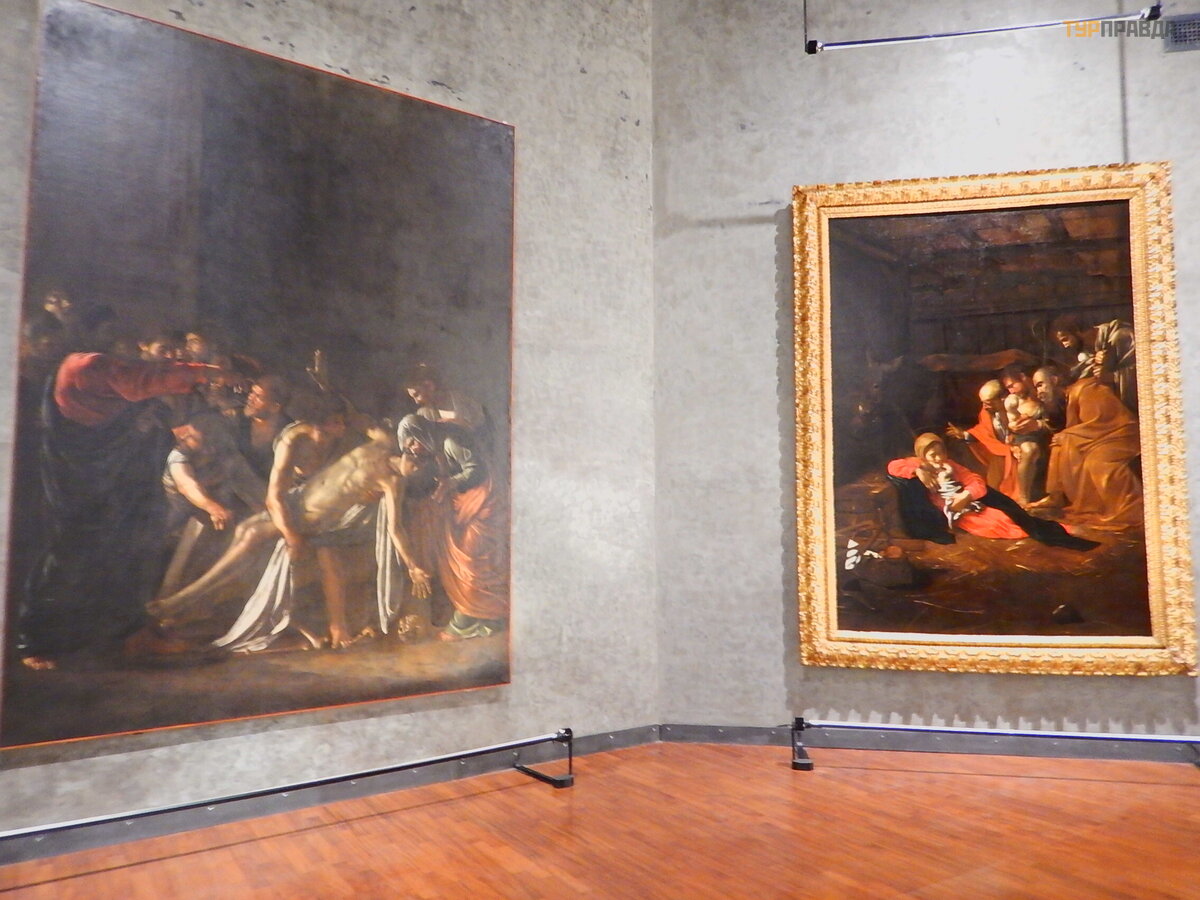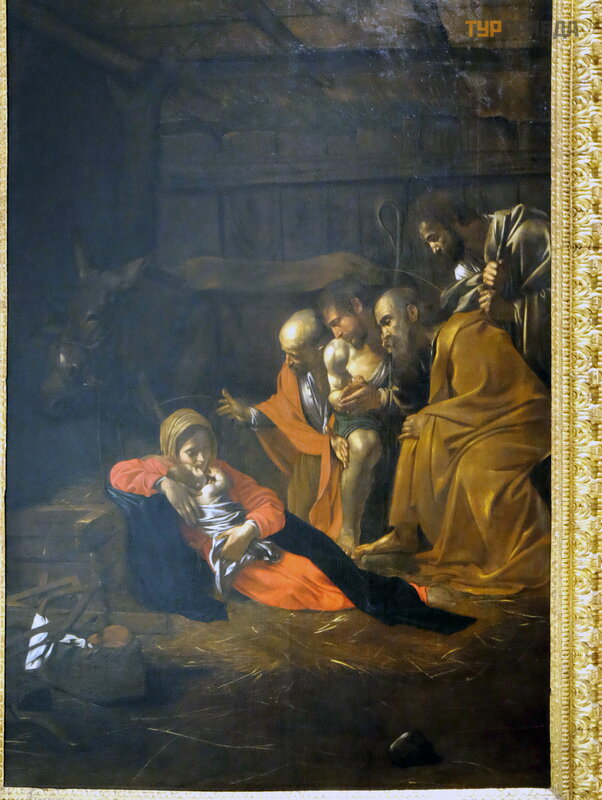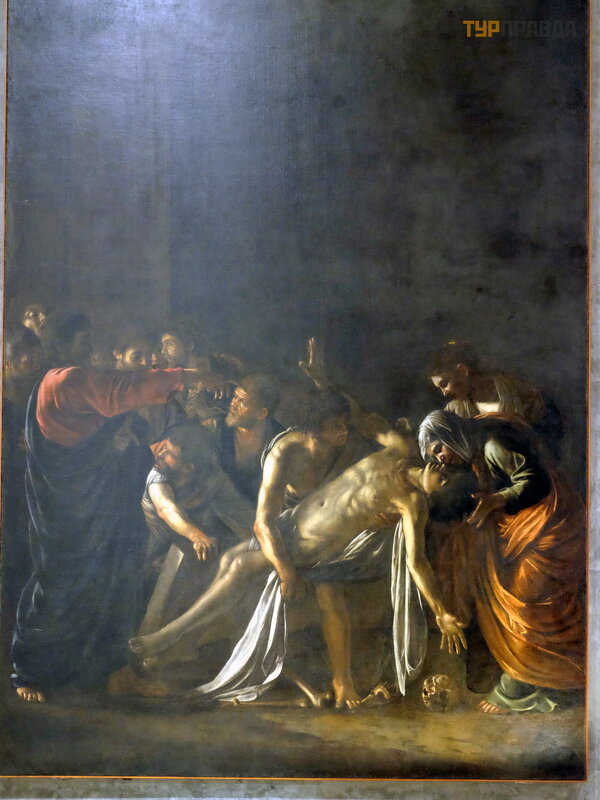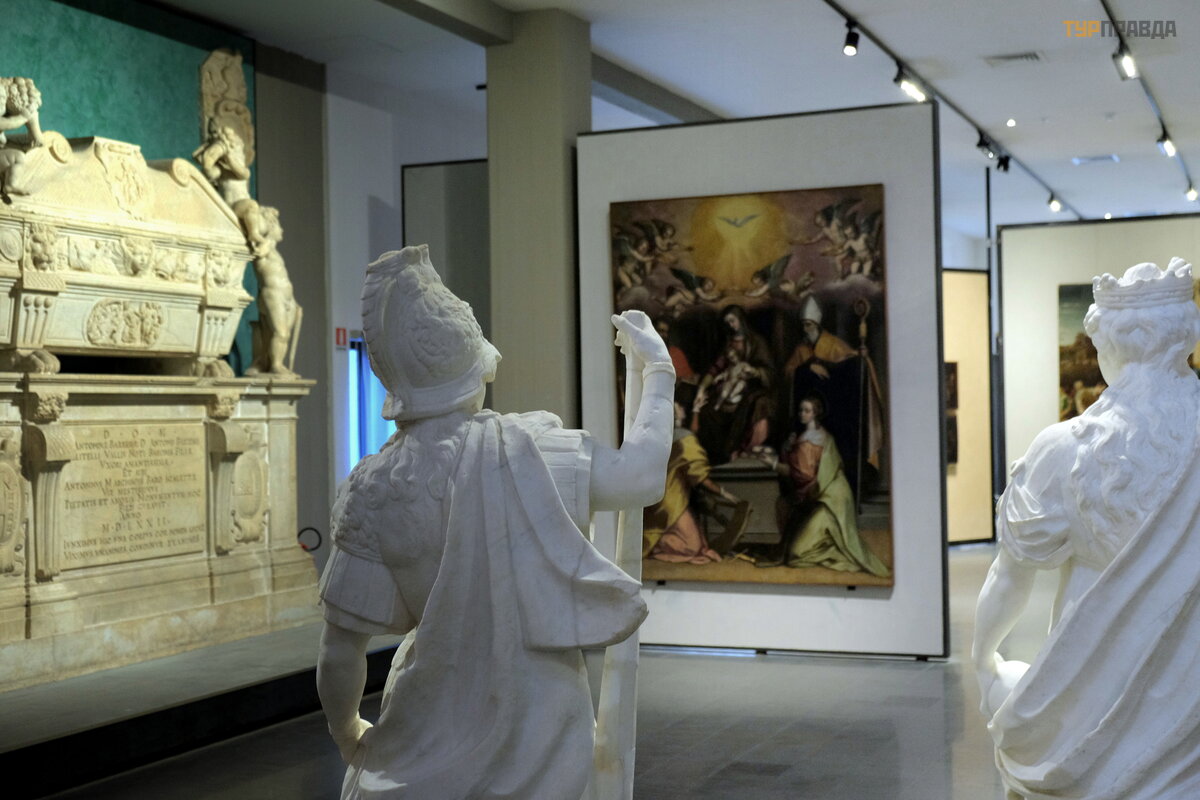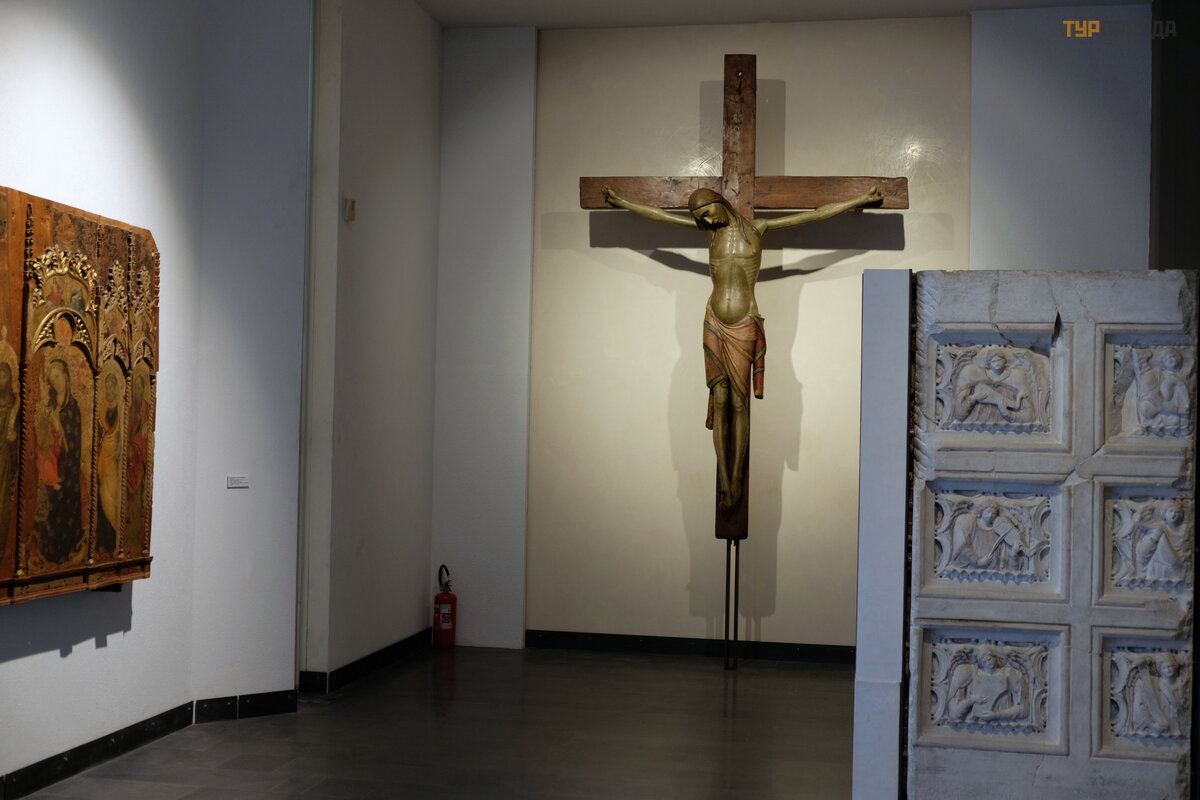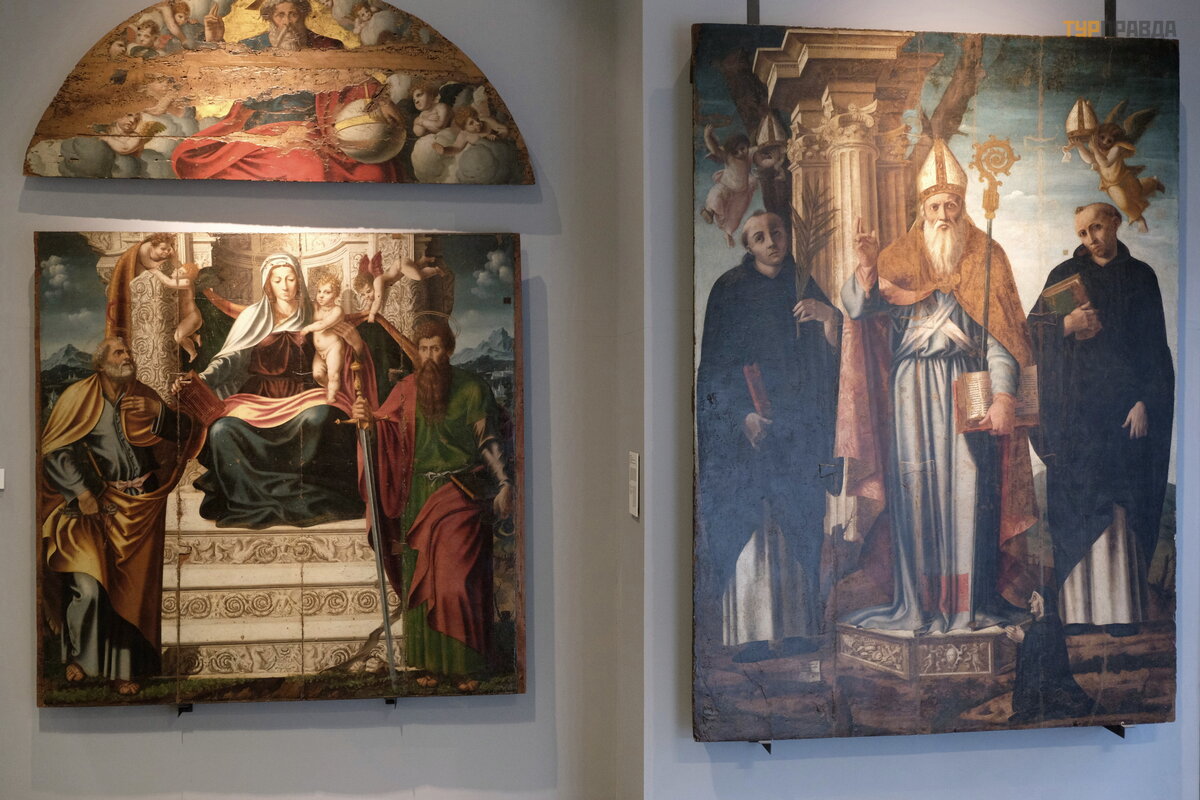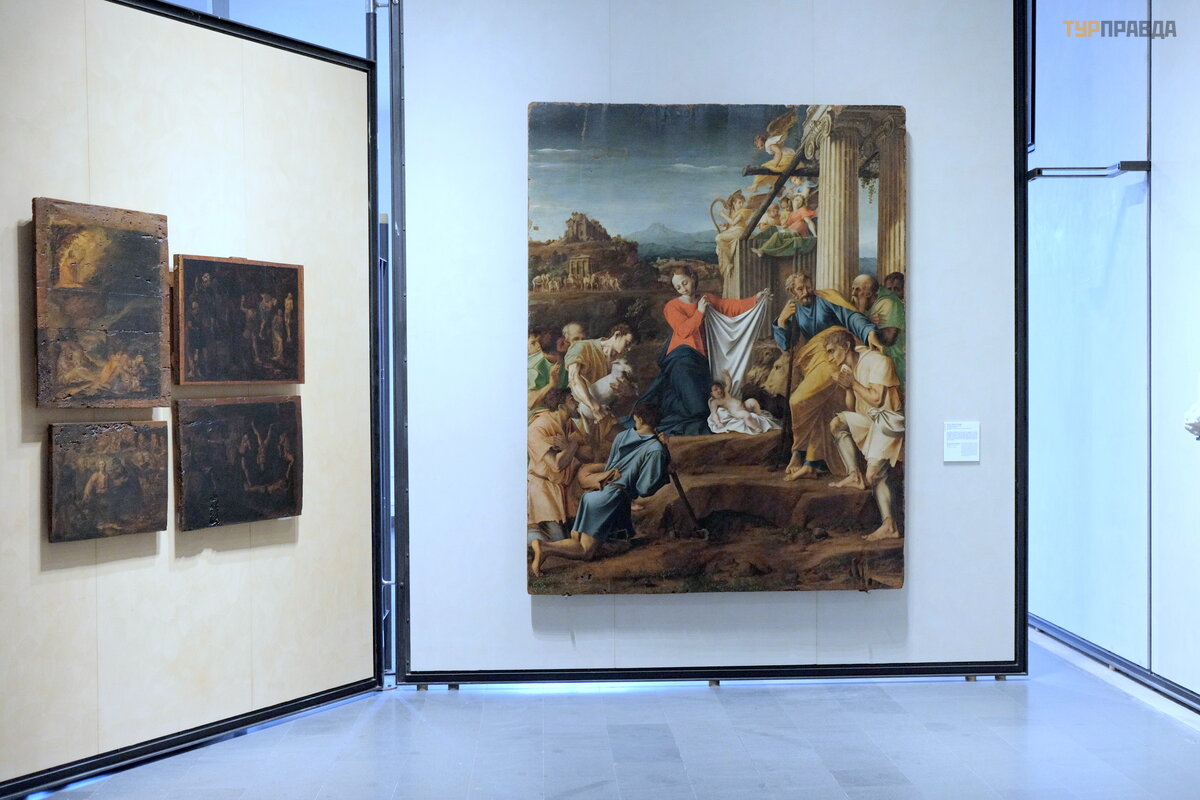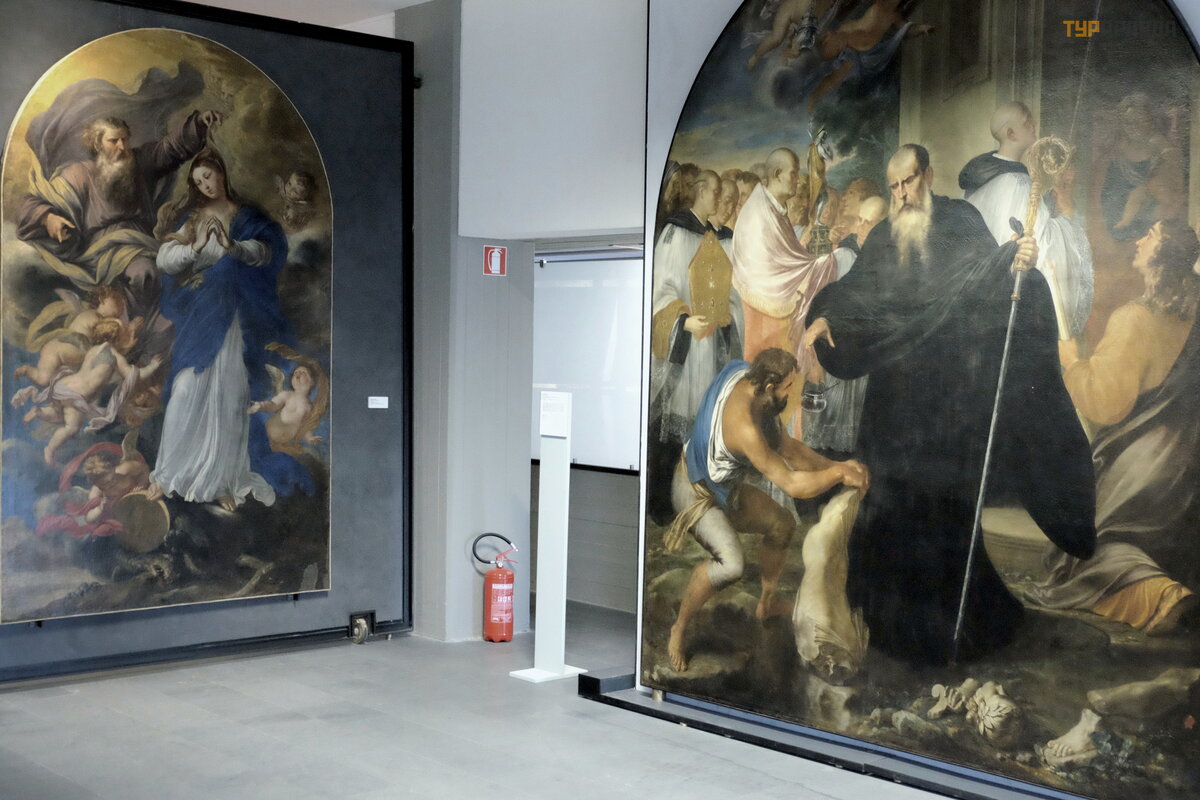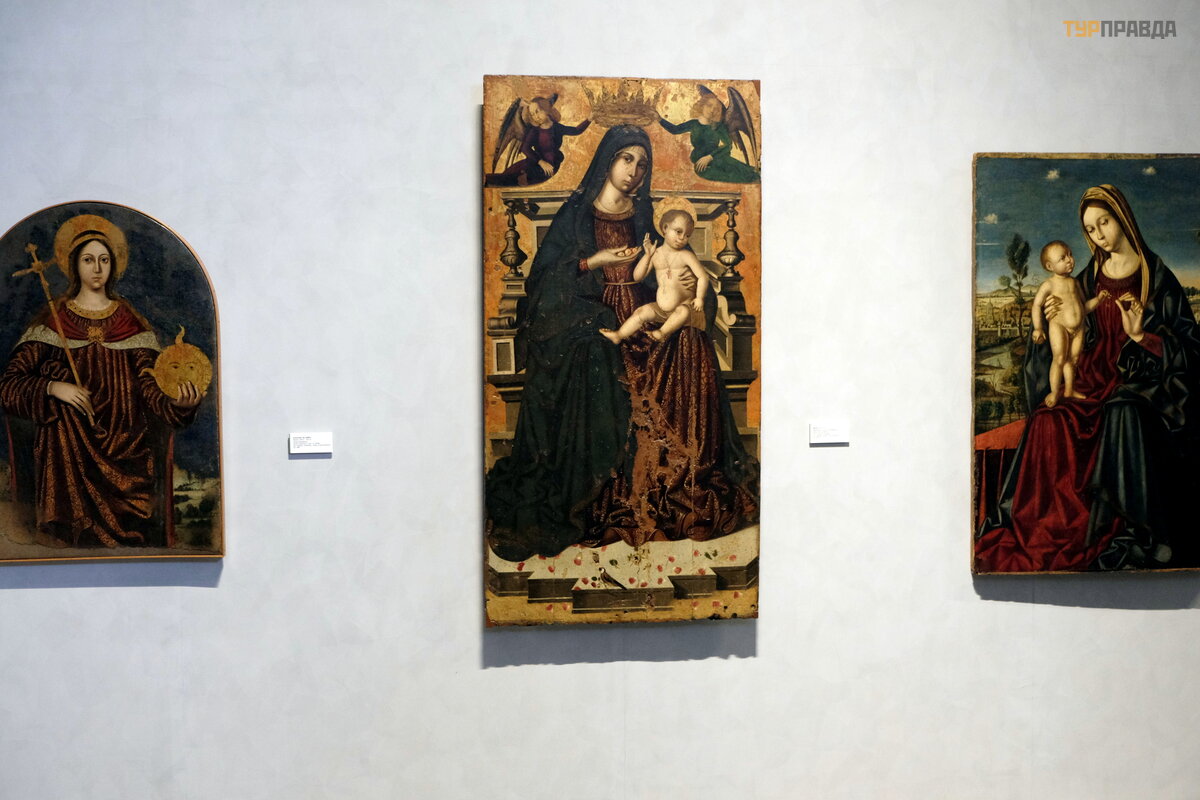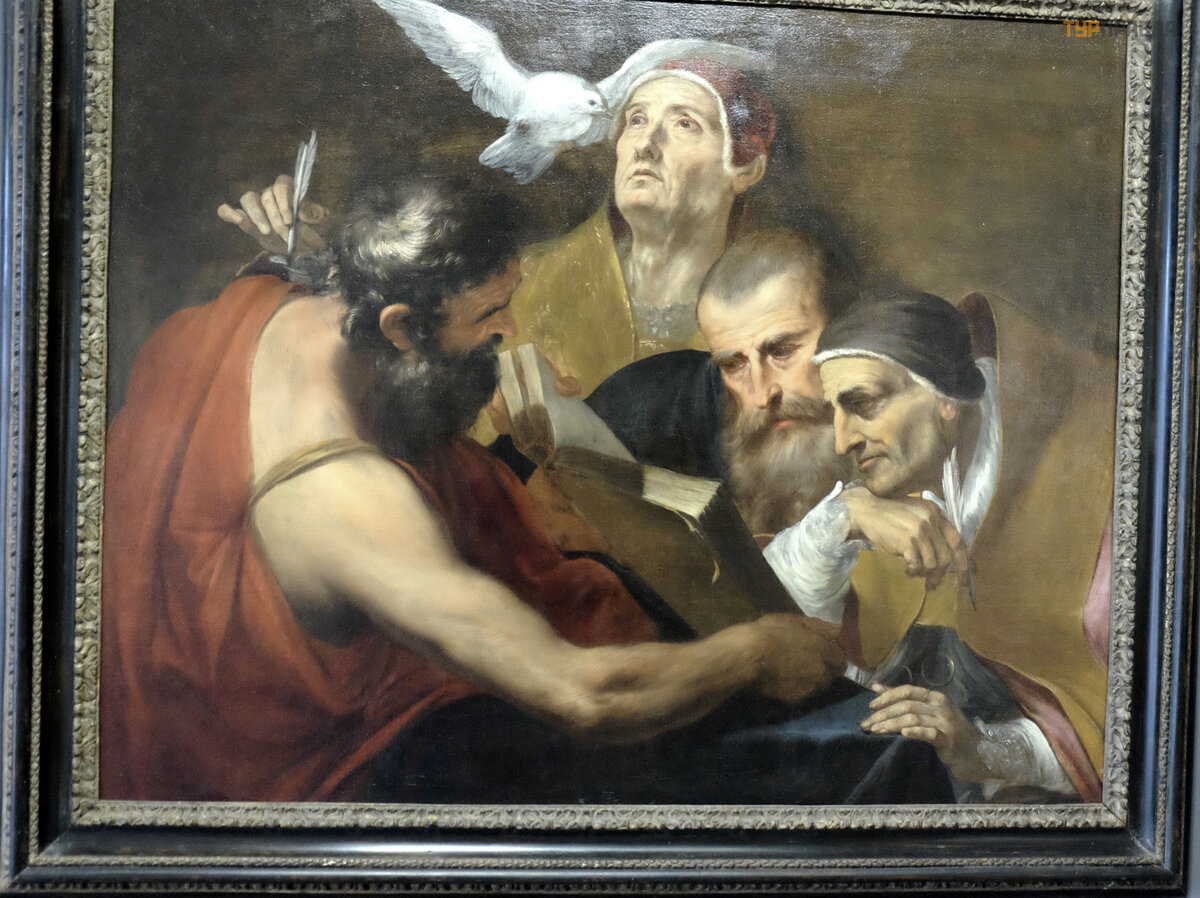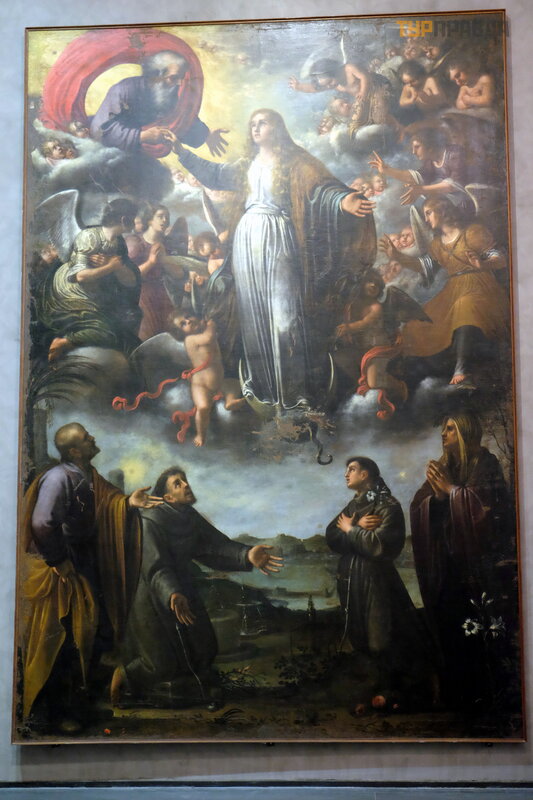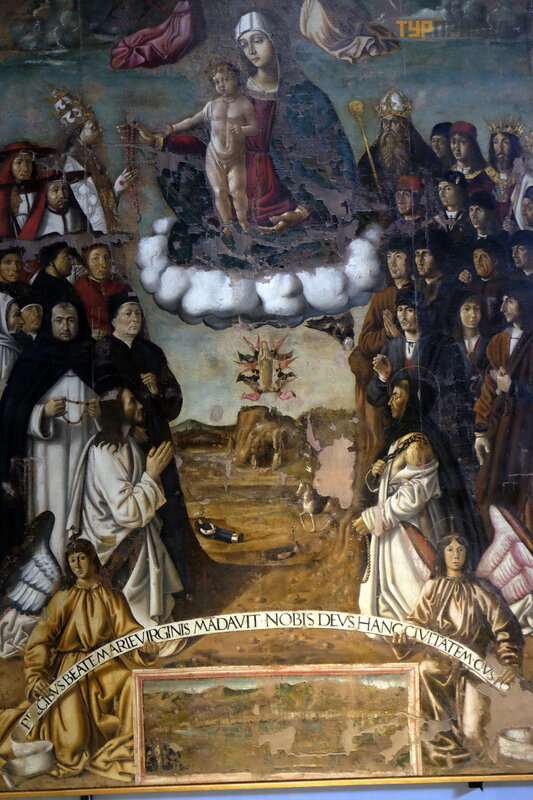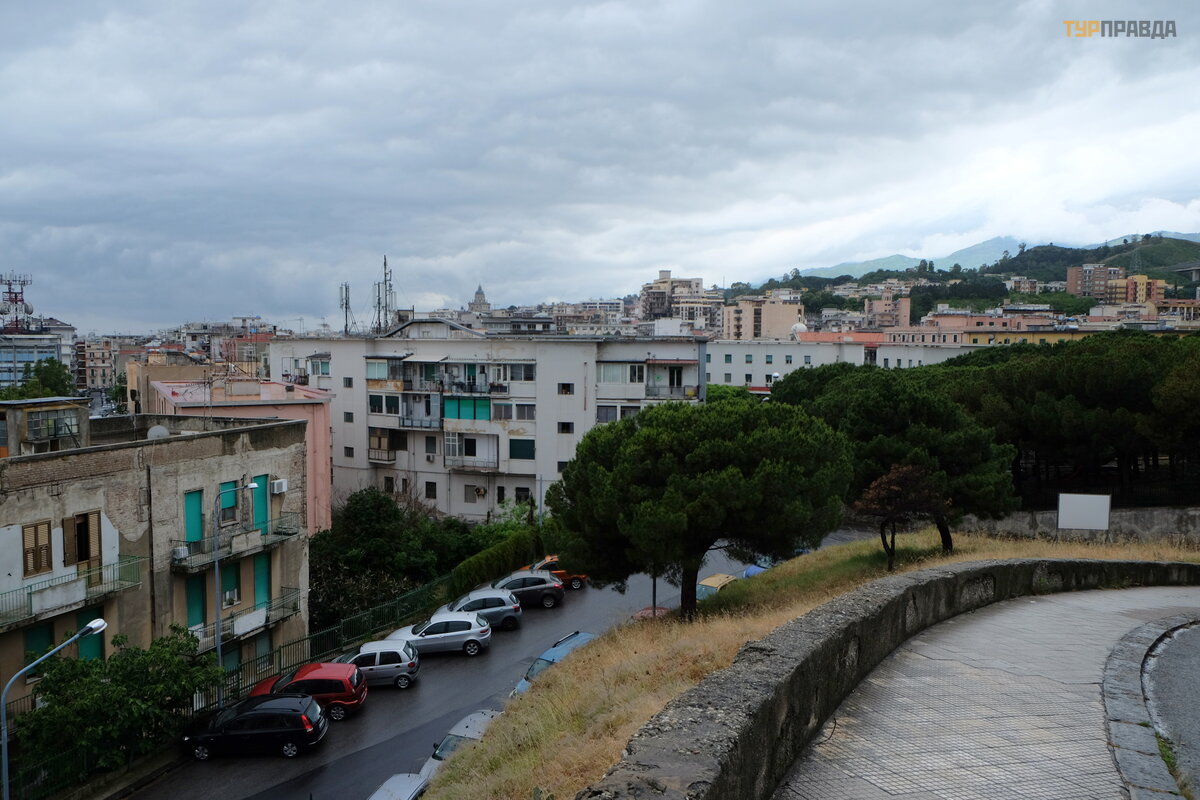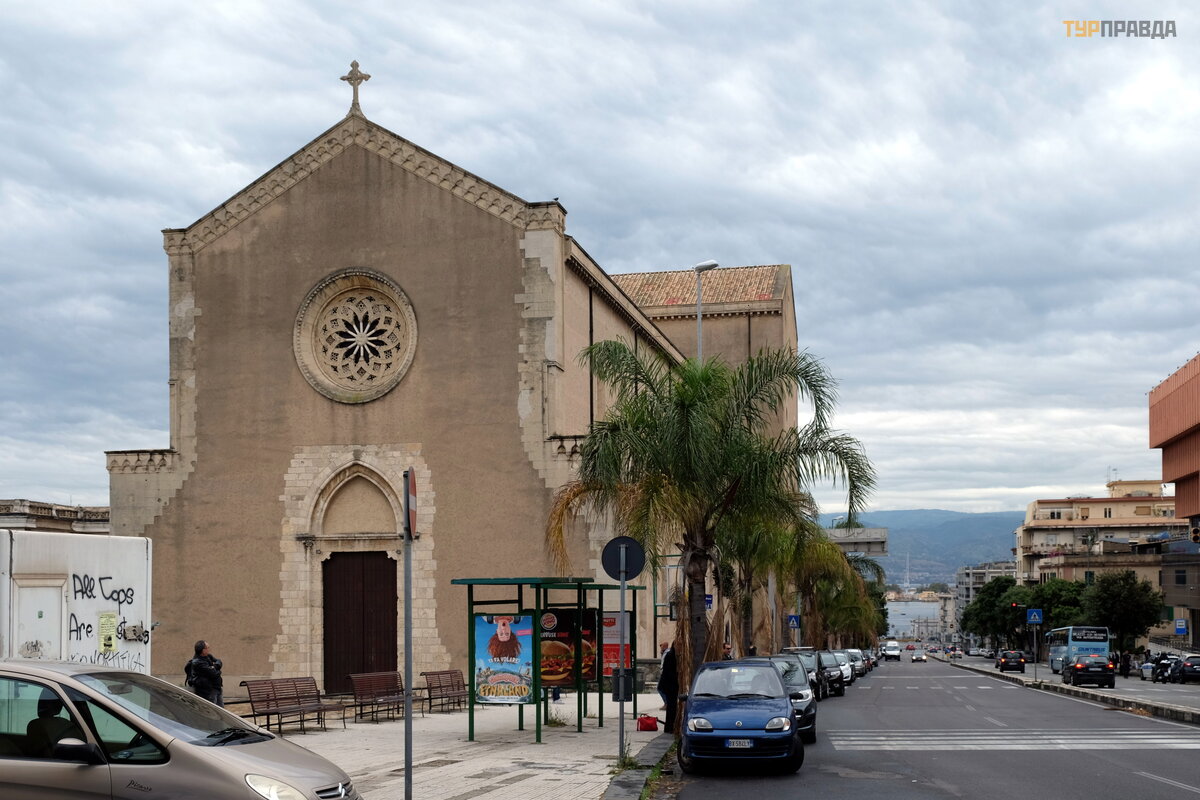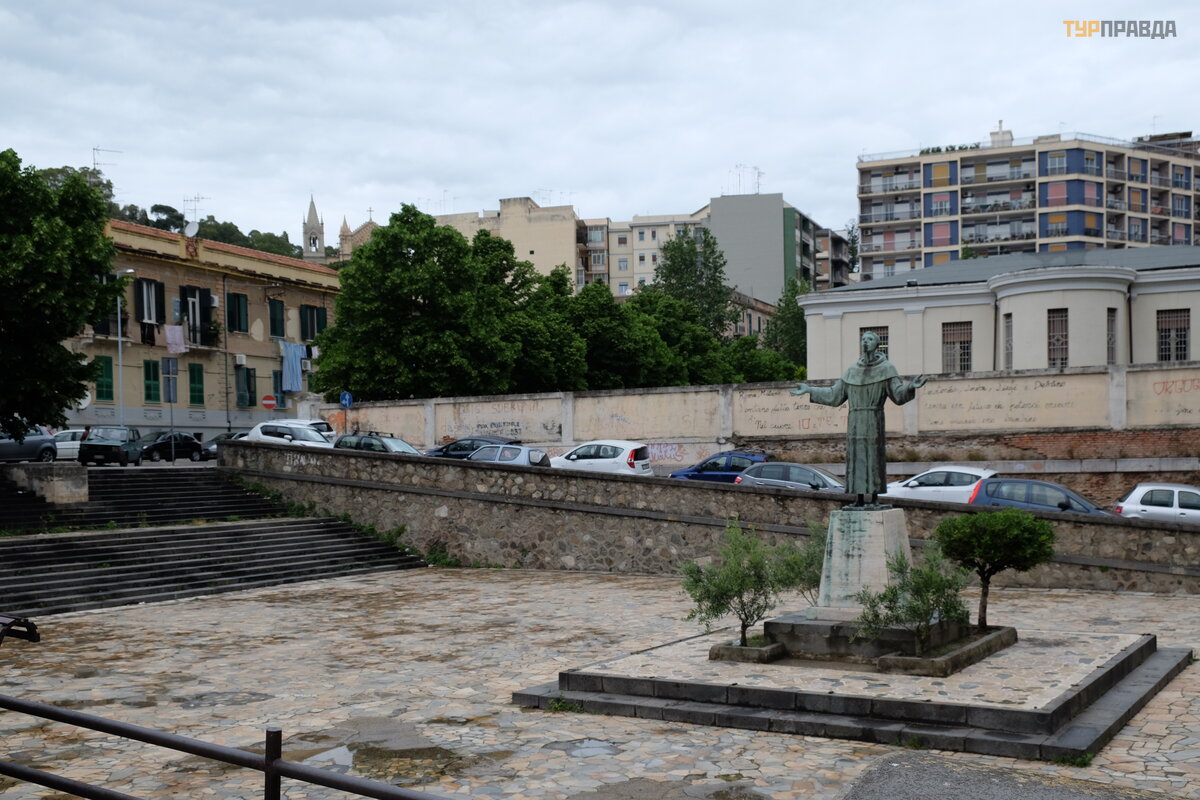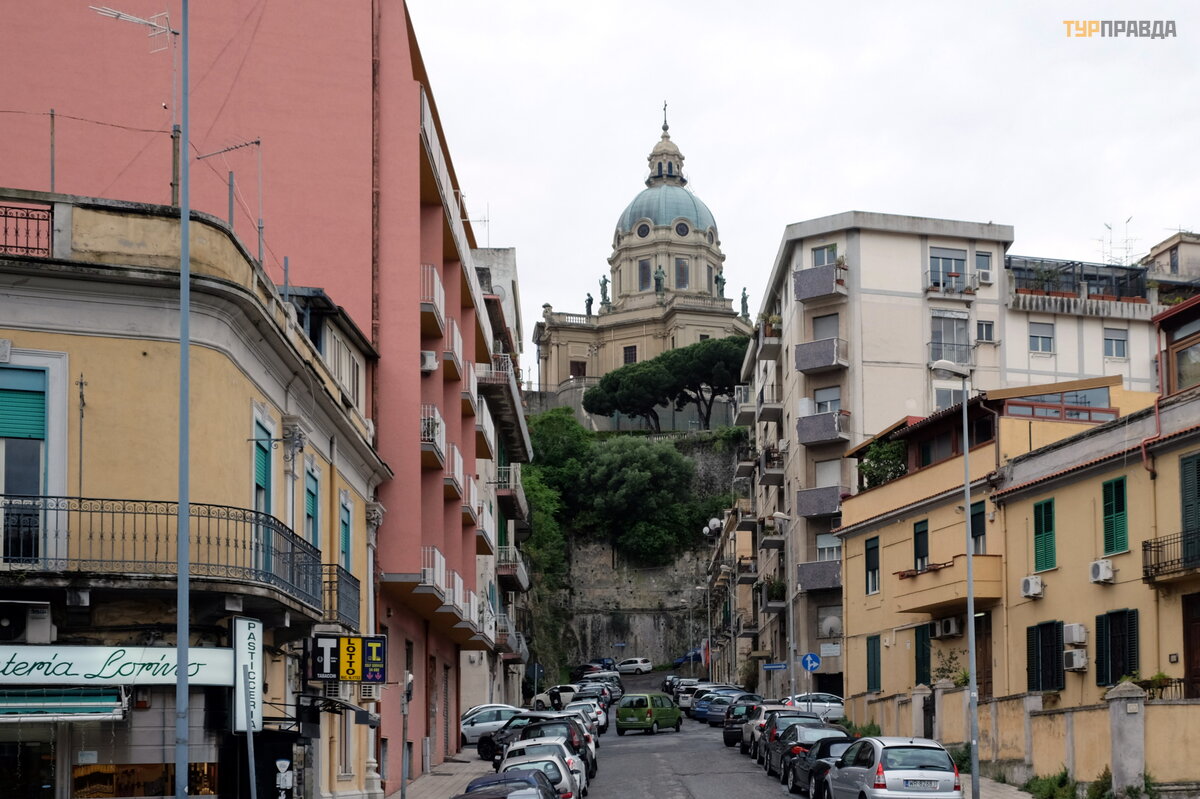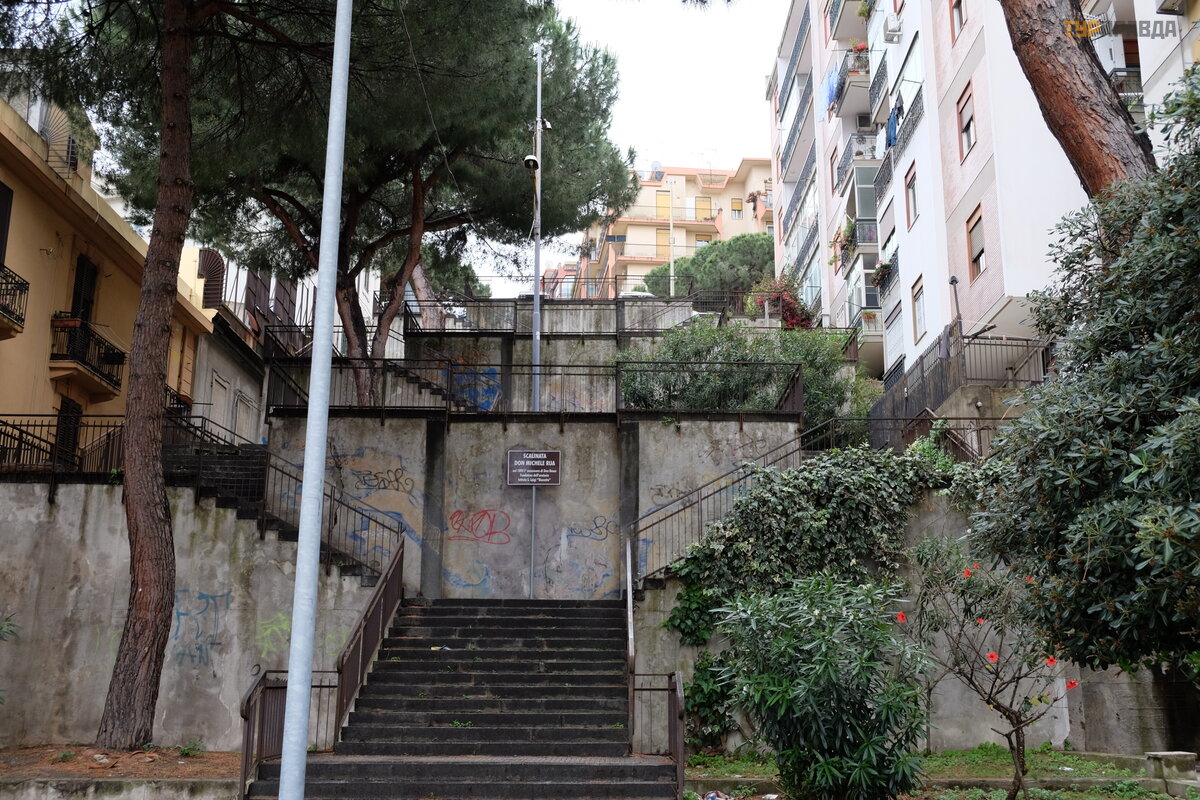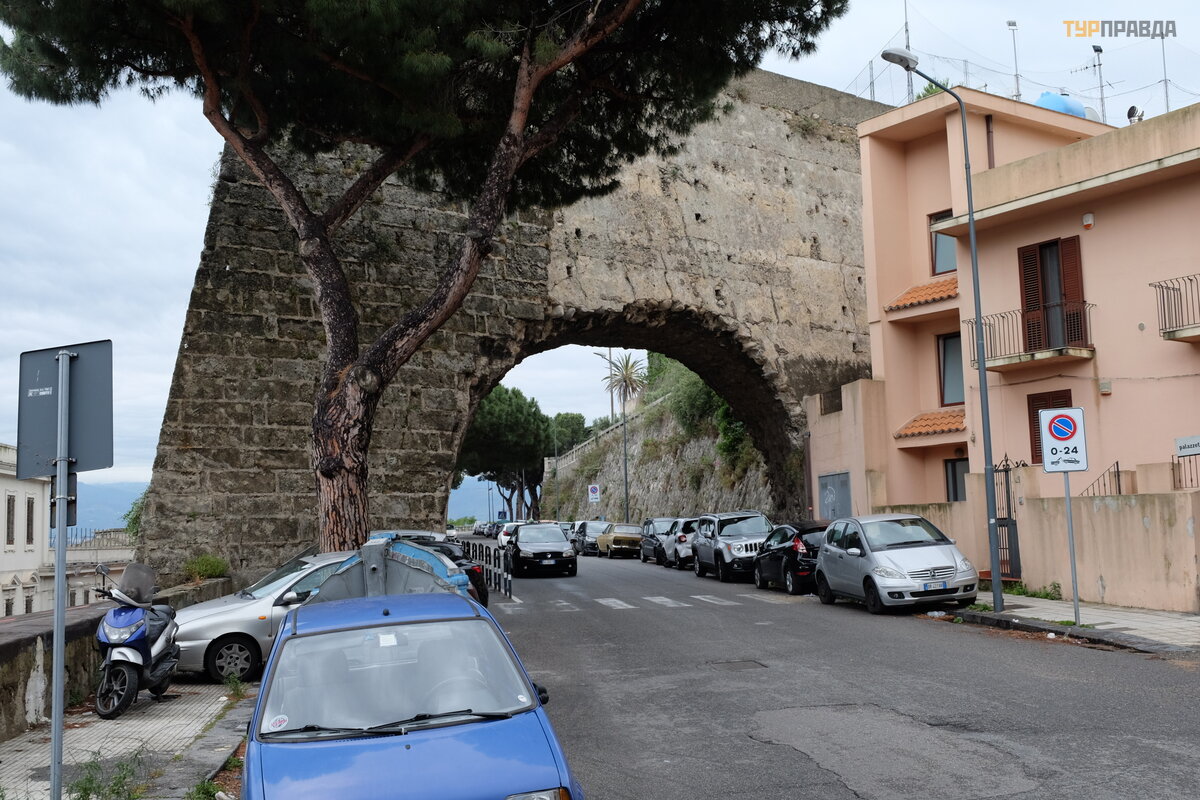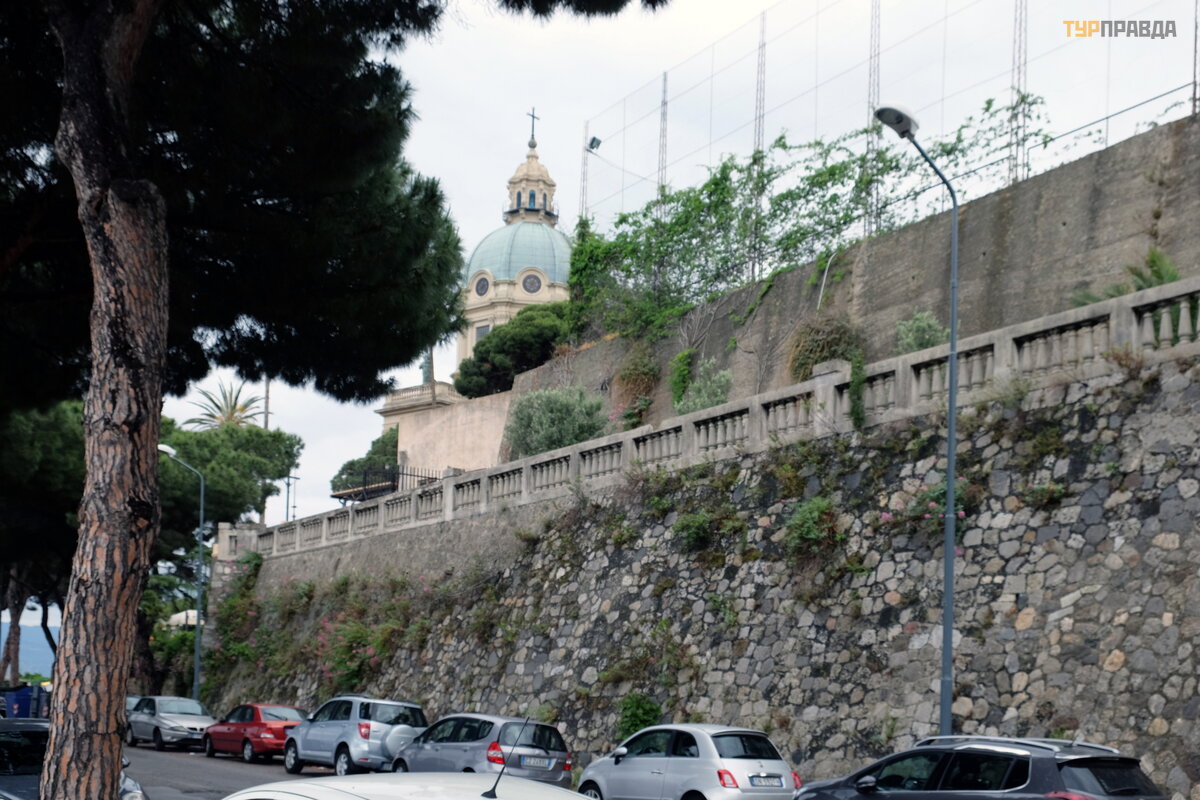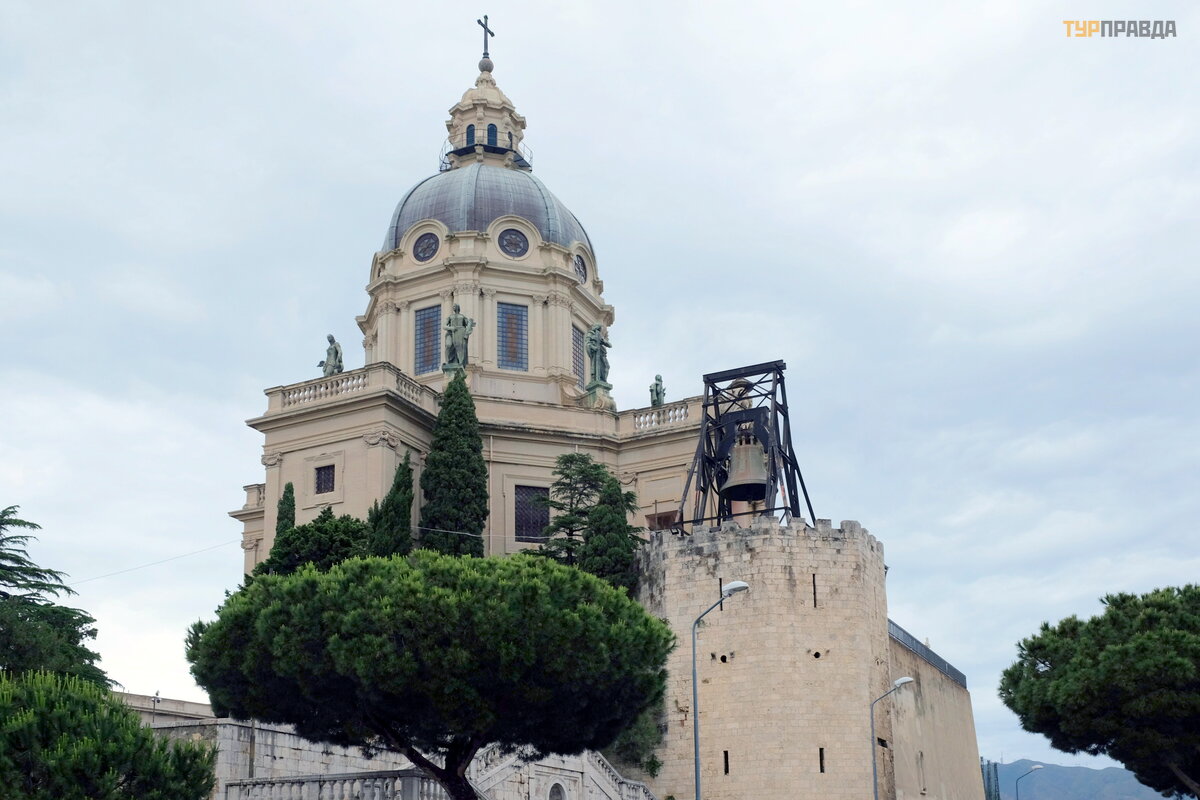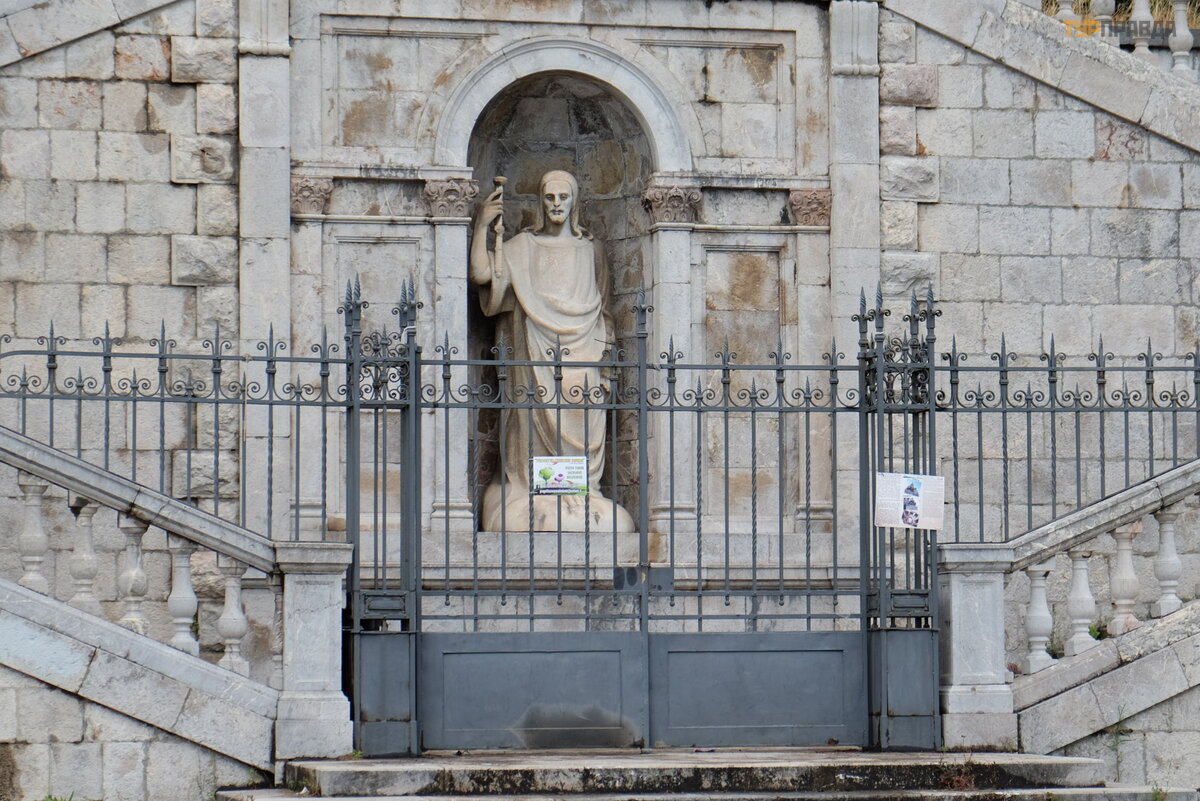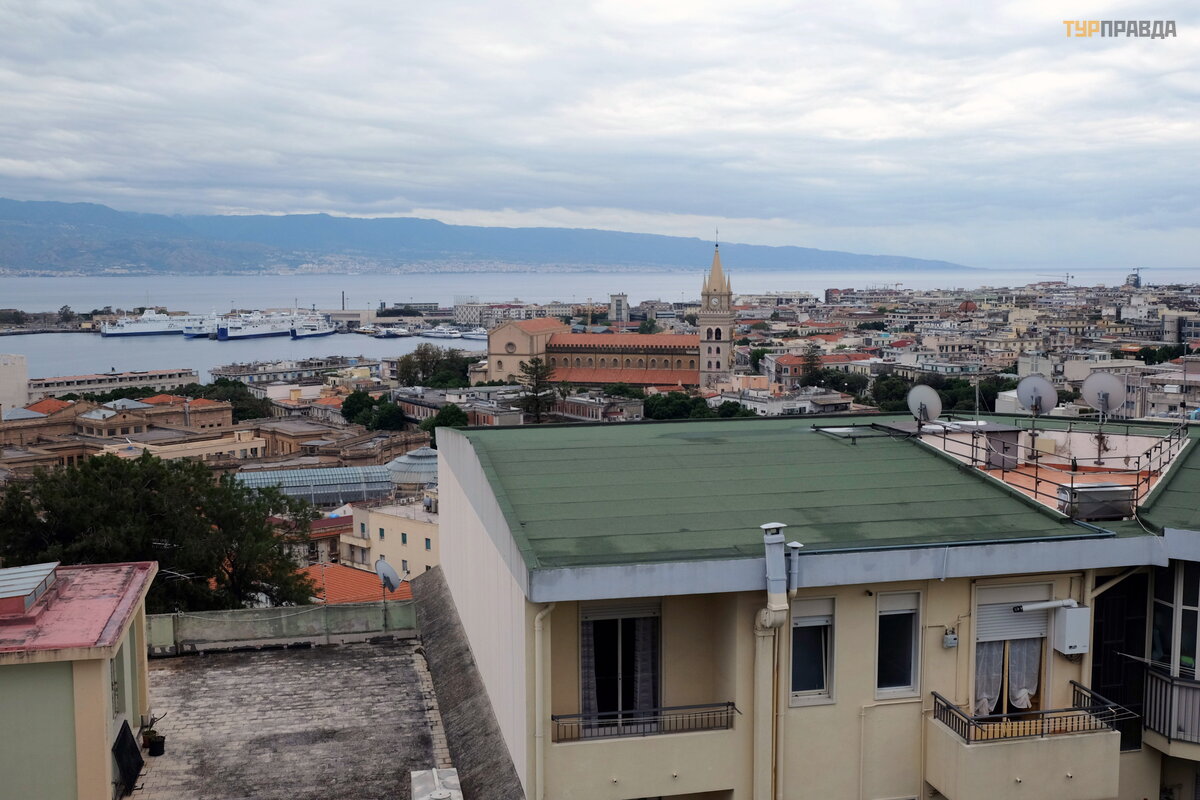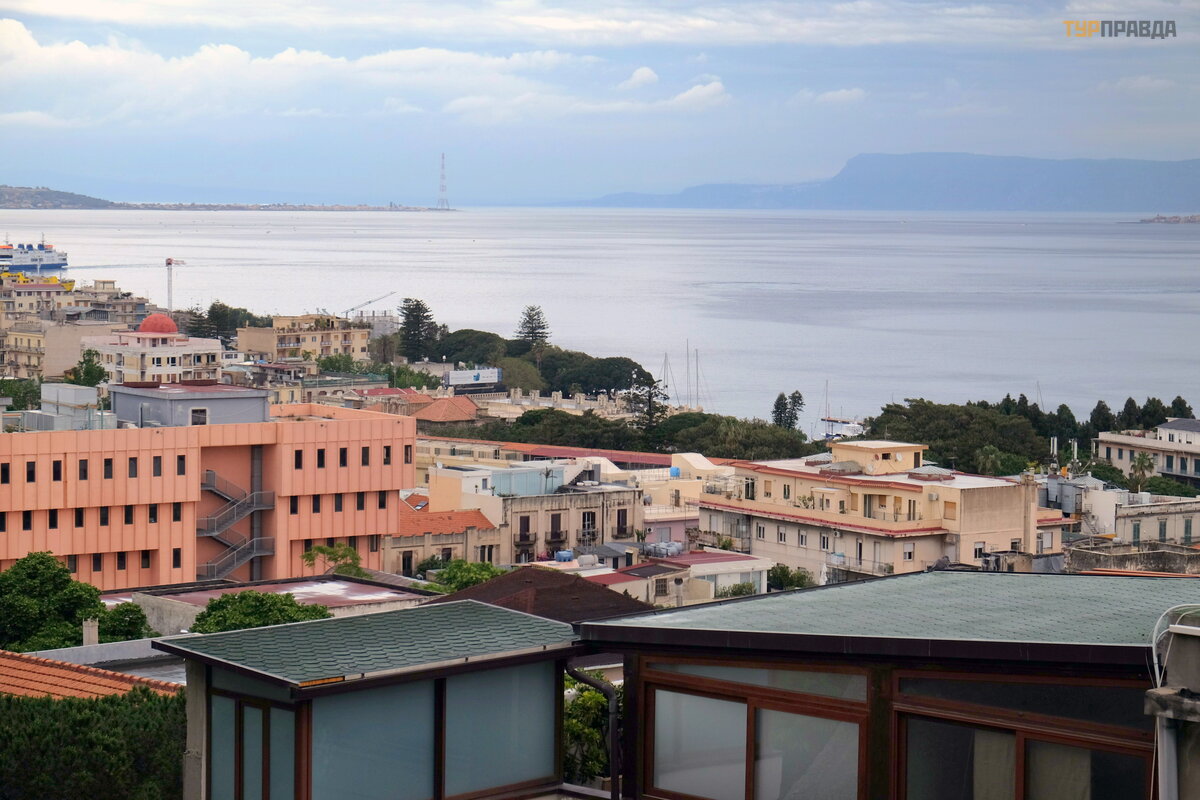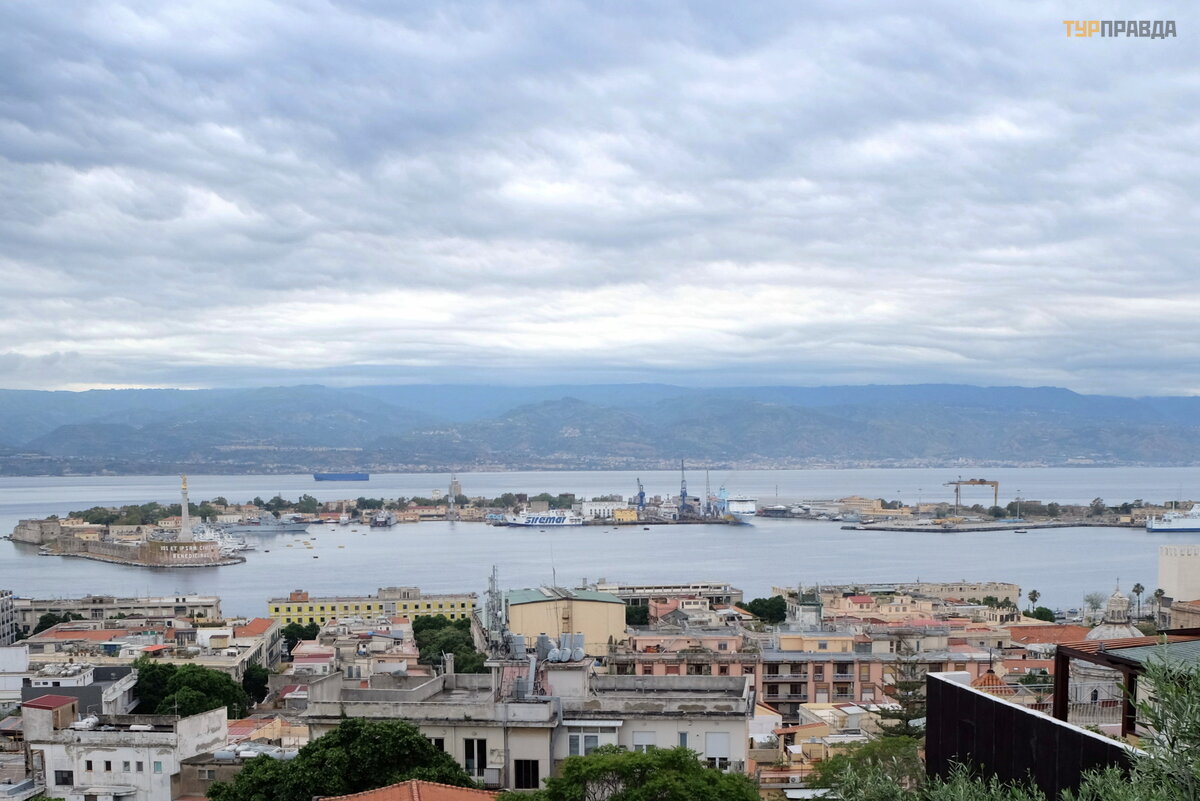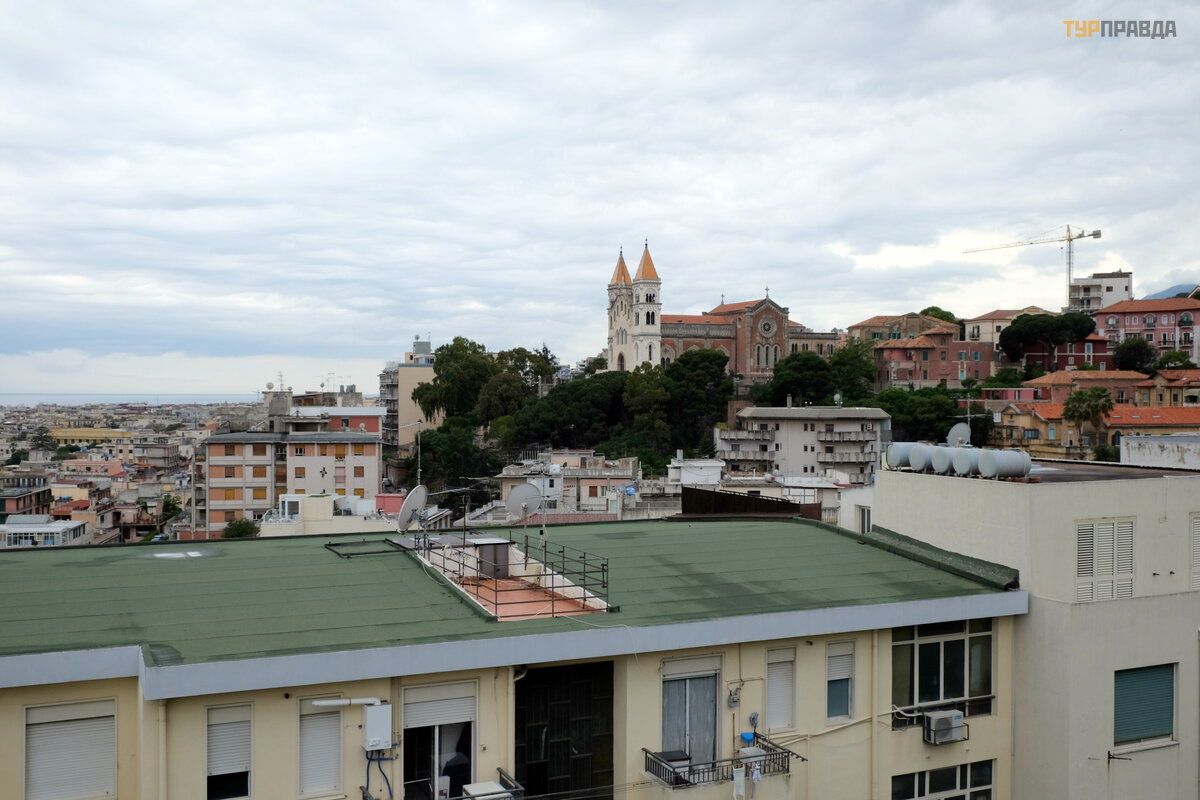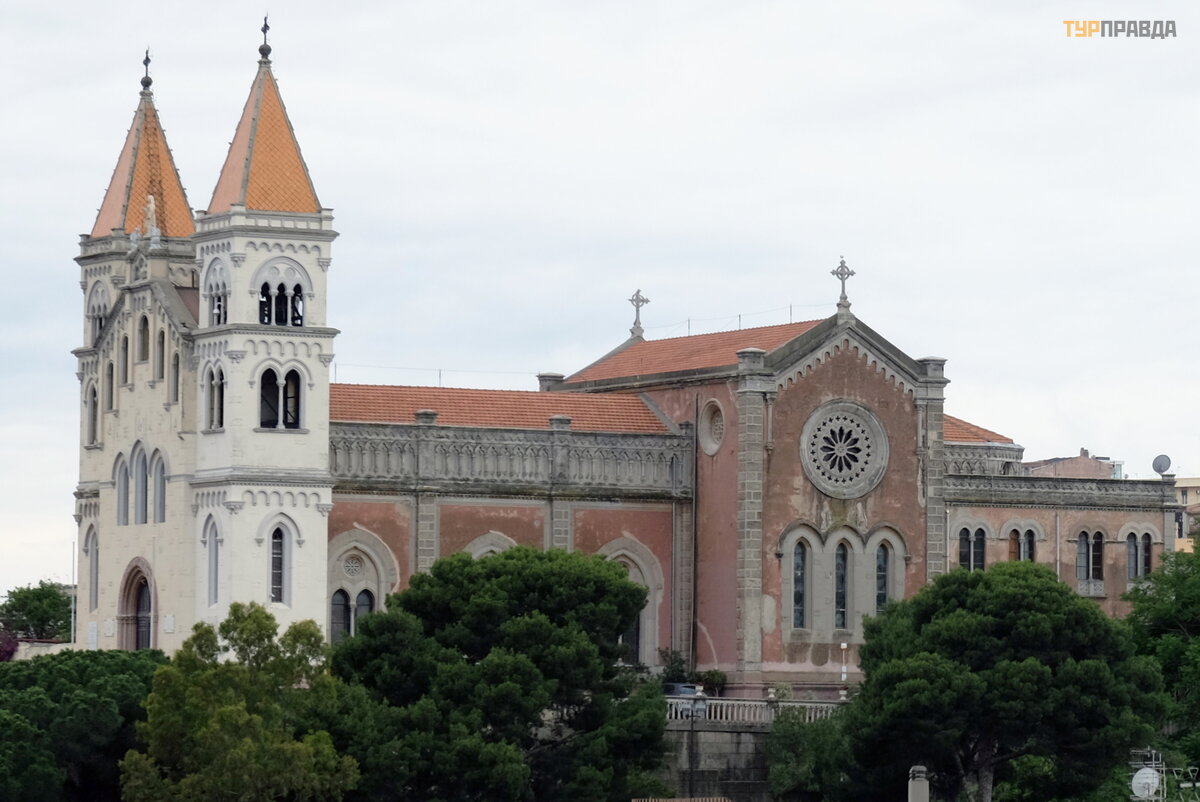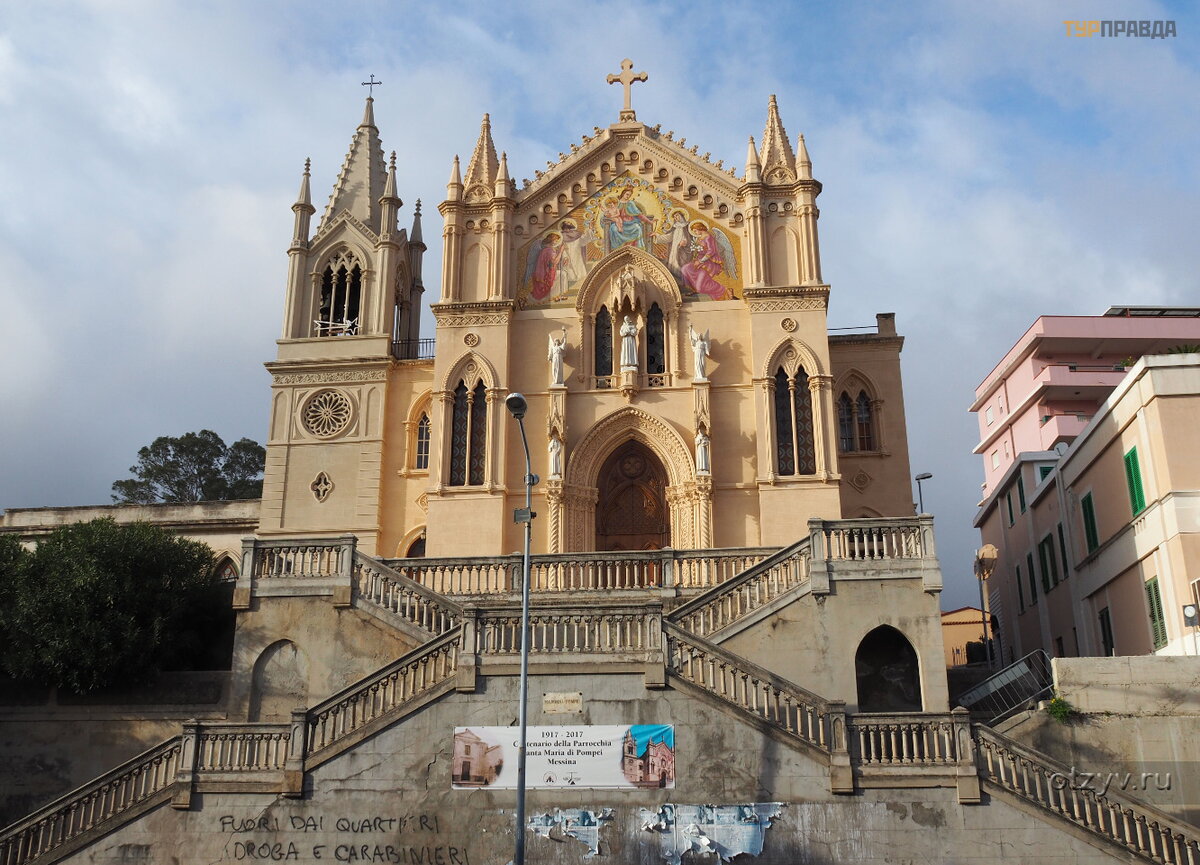Sicily. Part 5. Messina

Sicily. Part 1. Giardini Naxos >>>
We planned to visit Messina on Monday to see Caravaggio paintings in the museum, but we read on the Internet that the museum is closed on Mondays, so we spent Monday at the hotel and Giardini Naxos, and left for Messina on Tuesday.
The weather that day was cloudy, it was drizzling, we took umbrellas and slippers with us in case of rain. We went to Messina by bus, with a stop in Taormina, the road goes through the mountains, we passed several tunnels along the way. It takes about an hour to drive, the bus station in Messina is next to the train station, which is very convenient.
The station is located near the sea harbor. By the way, there is a free toilet at the station,
which is very rare for train stations in Italy.
Messina is the third largest city on the island (second only to Palermo and Catania), founded by the Greeks in 757 BC. e. It is located on the western coast of the Strait of Messina, which separates the island from mainland Italy (Calabria region).
From the station we go to the Cathedral. . .
. . . in Piazza Cavallotti, a bronze statue of Charles III of Bourbon (1757). . .
. . . the long Via Garibaldi starts from here.
We went to the church of Santa Caterina Vergine e Martire:
Another very unusual church is Santissima Maria Annunziata della Catalan, one of the oldest buildings in the city. The church was built in the 12th century, during the Norman period, on the foundation of an older temple. As a result of numerous reconstructions, the church acquired a rather original appearance in the style
which can be classified as Byzantine-Arab-Norman. This is the only church that survived during the earthquake of 1908, but sank 1.5-2 meters underground.
Via I Settembre leads to the main attraction of Messina - the square of the Cathedral (Piazza del Duomo).
Cathedral (Duomo di Messina). The first building of the church was built in 530 AD. e. When Sicily was in the possession of the Arabs, the temple turned into a mosque for two centuries. In 1061, the Normans conquered Messina from them, and Count Roger I returned the church to the Christians.
The long-suffering cathedral was repeatedly destroyed during a fire, earthquakes and bombing by Allied aircraft. In 1943, all the mosaics, statues, and marble decorations of the cathedral were destroyed. Now in the cathedral there are copies from the destroyed original works.
The central portal of the cathedral dates from the 14th century. It is decorated with carved decorative elements and statues of saints. Inside the cathedral is a huge building 92 meters long.
The organ in the cathedral (1948) is the second largest in Italy, second only to that of Milan, and the third largest in Europe. The cathedral itself in its size in Sicily is second only to the cathedral in Palermo.
By 12.00 all tourists gather at the 60-meter-high bell tower, built in 1930. In 1933, an astronomical clock was made especially for the bell tower in Strasbourg. The clock mechanism consists of two dials: one looks at the square, the other at the cathedral. At noon the women begin to ring the bells. The lion waves the flag and roars three times,
the rooster crows and flaps its wings. A carousel is installed in a niche under the rooster, where the figures of the Virgin and Child are visible, in front of which angels with prophets pass at noon, a castle crawls out of the sand, the saints also move.
Near the cathedral is the Fountain of Orion (1551). The author is a student of Michelangelo, Giovanni Angelo Montorsoli.
On the other side of the cathedral there is a monument that has survived all earthquakes, dedicated to the Immaculate Virgin (18th century) - at one time it was erected in honor of the deliverance of the city from the plague.
Behind the cathedral stands a monument to Don Juan of Austria (1572), dedicated to the Spanish commander who defeated the Turkish fleet in the famous Battle of Lepanto in 1571, when the Turks tried to land and capture Sicily.
We move along Via Garibaldi along the sea.
We pass several buildings. Palace of Zanca (1924), located in the European Union Square and is the seat of the Municipality of Messina:
Monument to those killed in the First World War:
Teatro Vittorio Emanuele built in neoclassical style in 1852:
We move further along the embankment. The city pleasantly pleased with a large number of green spaces on the streets.
The Strait of Messina is considered a difficult and dangerous navigation area, especially for small boats and yachts. The currents here change their directions 4 times a day and their speed can reach 5 knots (~9 km/h). The Tyrrhenian Sea is warmer and less salty than the Ionian,
and this difference in density gives rise to the northern deep and southern surface currents. At the moment of changing the direction of the current, tidal currents are formed, which can form large water funnels, especially dangerous for small craft. The mythical monsters Scylla and Charybdis were just between Sicily and Calabria, and Charybdis was located in the Sicilian part, and Scylla on the opposite cape.
According to legend, Saint Paul visited Messina. The inhabitants sent along with him pilgrims who wanted to get acquainted with the Mother of God. The meeting took place and the Mother of God handed them a letter for Messinian Christians and a lock of her hair. In 42 (1st century) the pilgrims returned to Messina with a letter in which the Mother of God promised them protection. “I bless you and your city” – it is this inscription in Latin that crowns the monument to the Mother of God.
We reach the small Square of Russian Sailors. During the tragic earthquake of 1908, ships of the Russian military fleet were located near the city.
Russian sailors were the first to come to the aid of the inhabitants of the destroyed city and saved more than 2 thousand people. Grateful residents erected this monument in their honor:
The Fountain of Neptune, designed by the architect Montorsoli in 1557. Neptune has a trident in his hand, and the monsters Scylla and Charybdis are chained to his feet.
Parallel to Via Garibaldi, along the embankment, there are tram tracks. The tram turns around near the Fountain of Neptune, so we drove a few stops to the Museo Regionale of Messina from this fun stop:
The main museum of the island (ticket price - 8 euros) is quite far from the main attractions of the city, so there are very few visitors.
There is another marble statue of Neptune Montorsoli in front of the museum building:
In thirteen rooms, the museum houses the most valuable Sicilian works of art, including the Madonna and Child with Saints by Antonello da Messina (15th century):
Two masterpieces by Caravaggio. . .
. . . "Adoration of the Shepherds". . .
. . . and "Resurrection of Lazarus".
Unfortunately, the backlighting of the paintings gives a strong glare.
And the works of other masters of painting and sculpture on religious themes:
While we were inspecting the museum, it rained outside, so we went back on foot.
On the way, an extremely exciting incident happened to me: my wife went to the pharmacy, and I stayed waiting for her on a street bench. Since I had a lot of things in my hands (a camera, an umbrella, a bag), I put all this next to me. Then I waited for my wife and went on, went to a cafe, ate ice cream, reached the park, and when I wanted to take a picture of an interesting tree, I was horrified to find that my camera was gone! We ran back, there is no cafe either,
we run to the pharmacy - the benches are empty. I have a complete shutdown, because my camera is quite expensive, Fujifilm X-E2, with a good fast lens. The wife goes to the pharmacy - and, lo and behold! - takes out my "Fujik". It turns out that a passer-by saw a fotik on a bench and took it to a pharmacy. For joy, I didn’t know how to thank the pharmacy workers, I gave money - they didn’t take it. Here are the Italians! For comparison, I remembered how in Sudak I forgot wet swimming trunks in a booth on the beach, returned a couple of minutes later - no!
After such stress, we had to sit down for a bite to eat and drink wine, which we did in a nearby cafe.
Having reached back to the Russian Sailors Square, we turned towards the Sacrario Cristo Re temple along Via Bocchetta, perpendicular to the embankment.
The Basilica of St. Francis (Chiesa di San Francesco all'Immacolata) is the second most important church in Messina. The church was so important for the city that noble people were buried in it for a long time;
ruins remained of the temple: only the central facade with a rosette and two side apses survived. During the restoration, the architects did their best to restore the basilica to its former appearance.
In front of the basilica, a statue of St. Francis:
Temple Sacrario Cristo Re (Temple of the King of Heaven) on the highest point of Messina, where there used to be an ancient Greek acropolis in ancient times:
In the 12th century, by order of the English king Richard the Lionheart, a fortress was built on this site to control the city, later a castle or fortress always stood on this site.
It was necessary to climb these stairs:
An earthquake in 1908 almost completely destroyed the medieval castle, but some things survived, such as one of the 13th century towers and foundations.
The current building of the temple was erected in 1937, in which the remains of more than a thousand soldiers who died during the First World War were buried. Next to the temple, in a special belfry, there is the third largest (2.8 m, 130 tons) Italian bell, which was cast from cannons captured during the First World War.
In the former fortress wall there is a niche where a monument to Richard the Lionheart is installed.
Let's go to the observation deck overlooking the city and the strait between Sicily and mainland Italy.
The harbor of the port of Messina is closed by a crescent-shaped cape and the entrance to the port is guarded by powerful fortifications - the fortress of the Savior and the royal citadel.
Since ancient times, there have been several projects to build a bridge (1.5 km) across the strait, but they were abandoned due to the danger of an earthquake and high financial costs.
The Sanctuary of the Madonna di Montalto (Santuario della Madonna di Montalto) on Capperina Hill is clearly visible:
Descending back to Via Bocchetti, we visited the church of the Madonna di Pompei (chiesa di Pompei). The church looks very elegant against the background of other buildings in Messina, all thanks to the sandy color of the facade, external painting and white figures of saints above the main entrance. With its high double-sided staircase, it resembles the Church of the Trinity in Piazza di Spagna in Rome.
On this list of attractions in Messina for us was exhausted, and we returned to our hotel.

